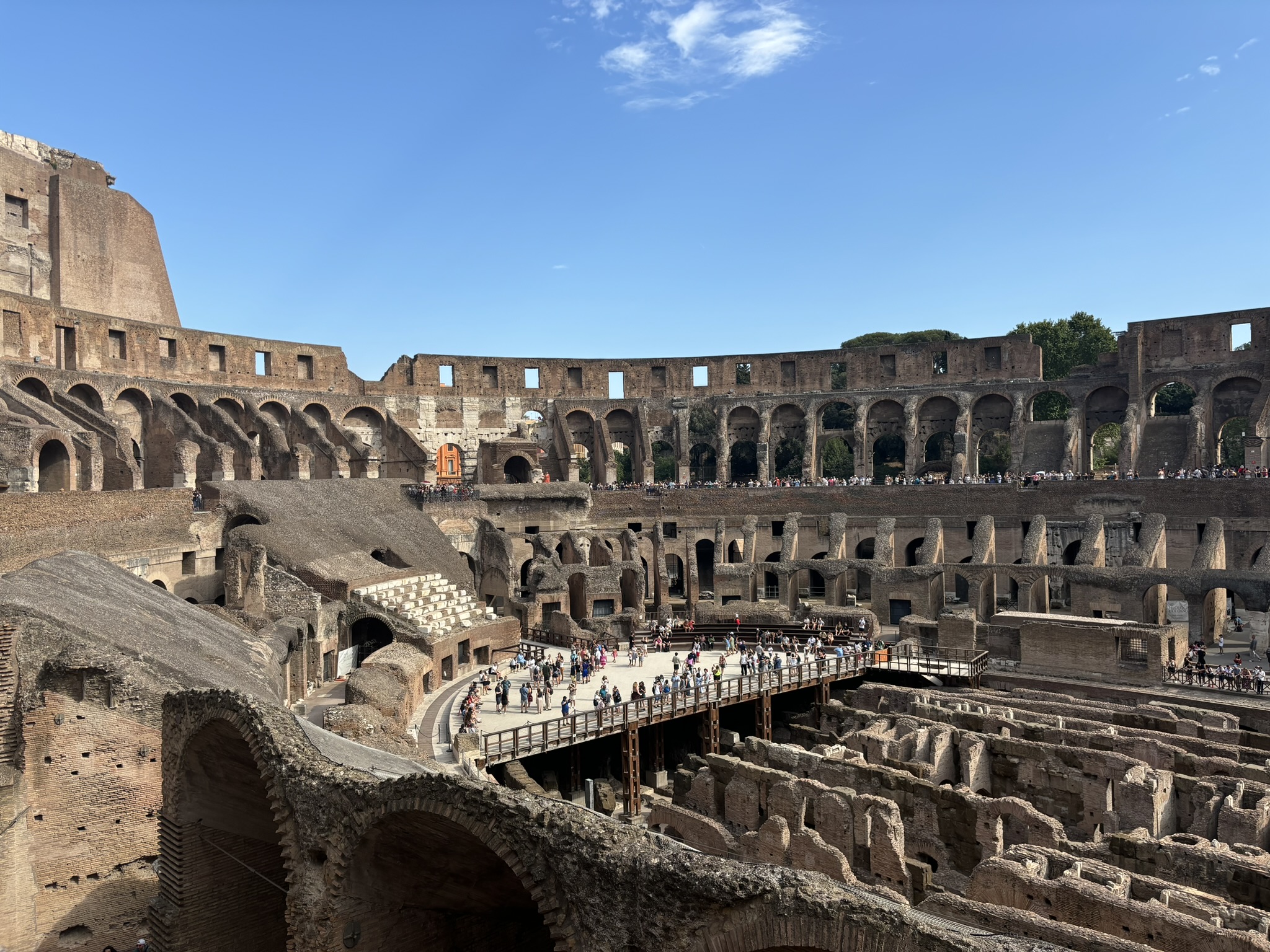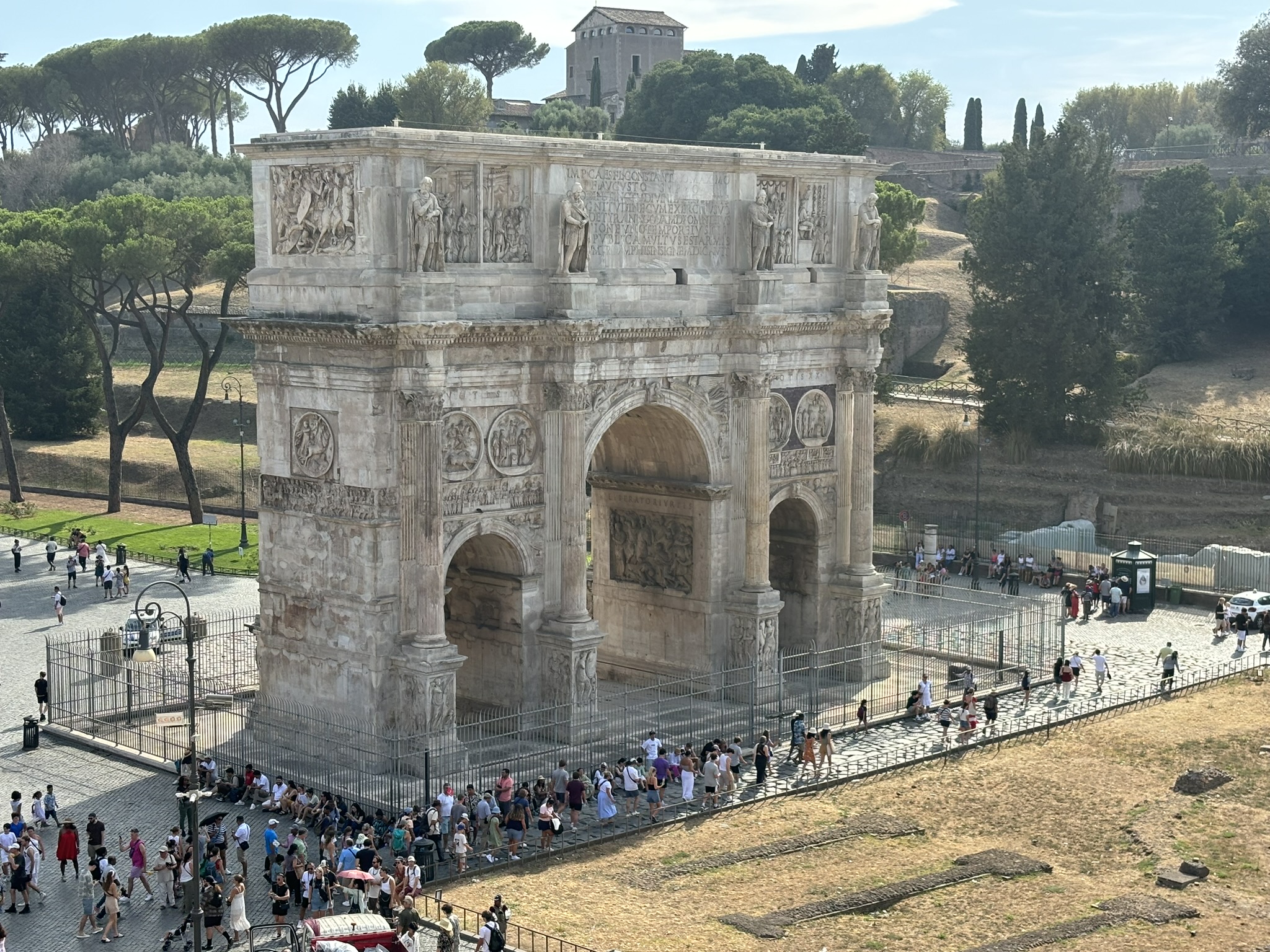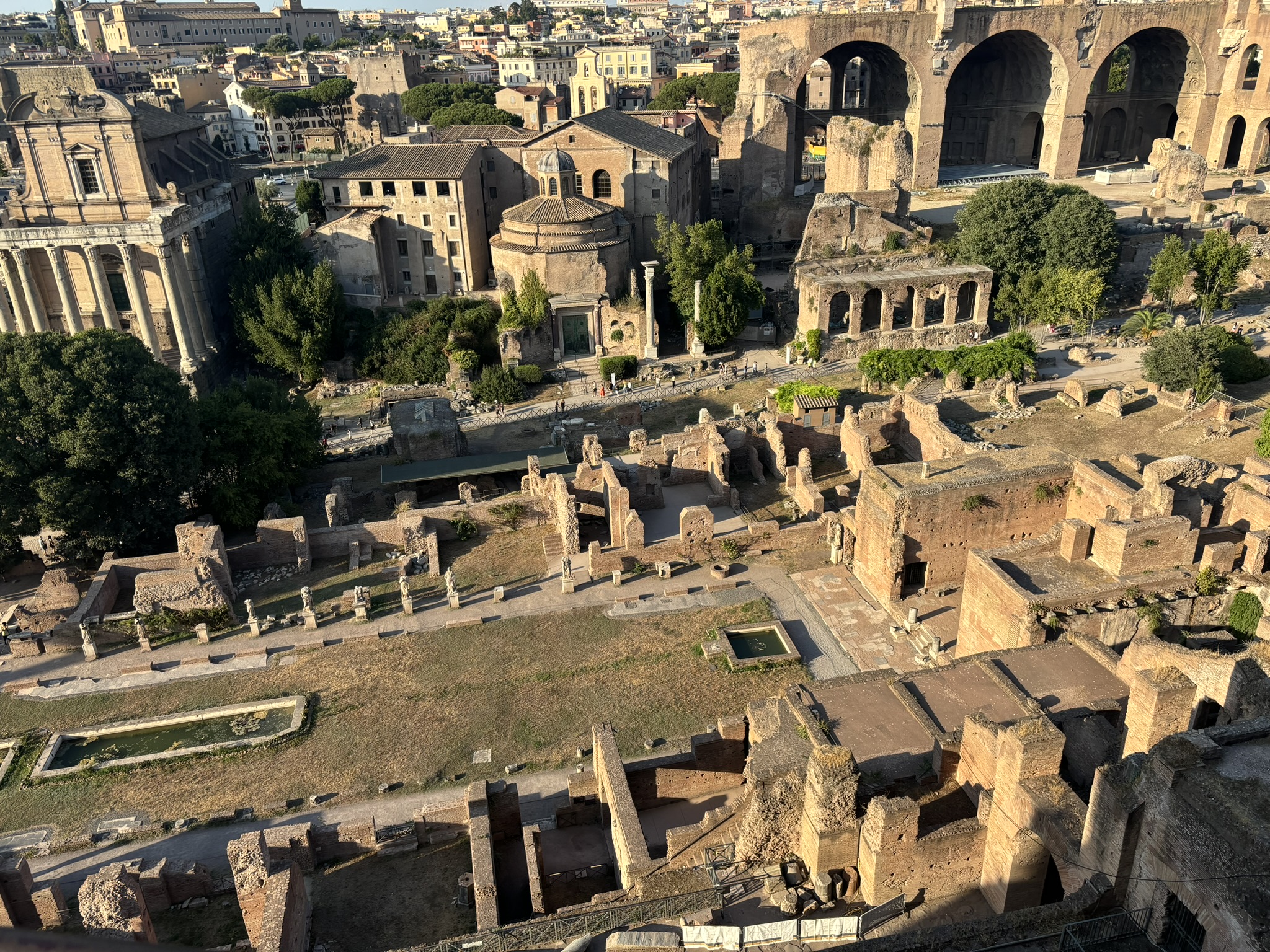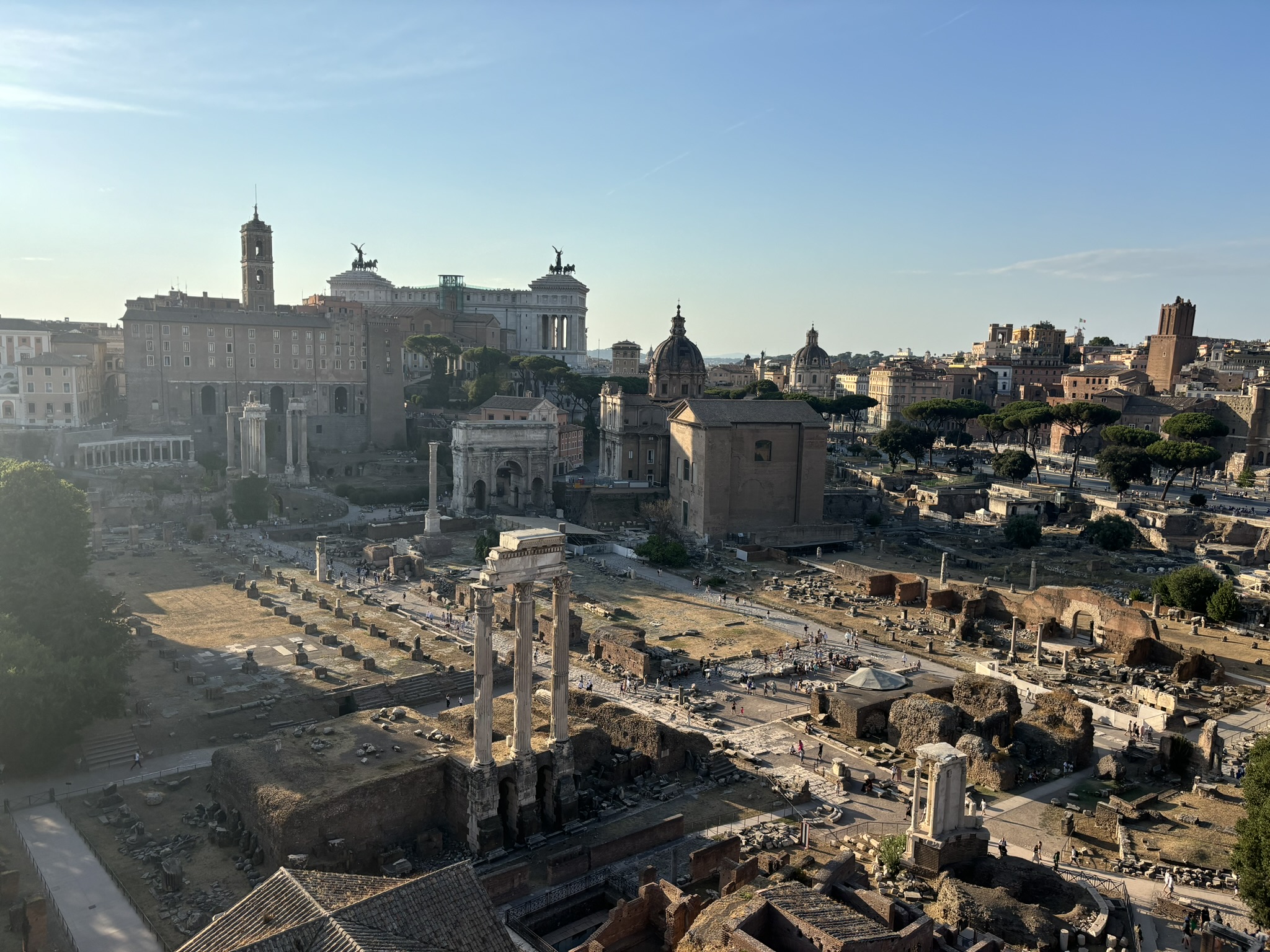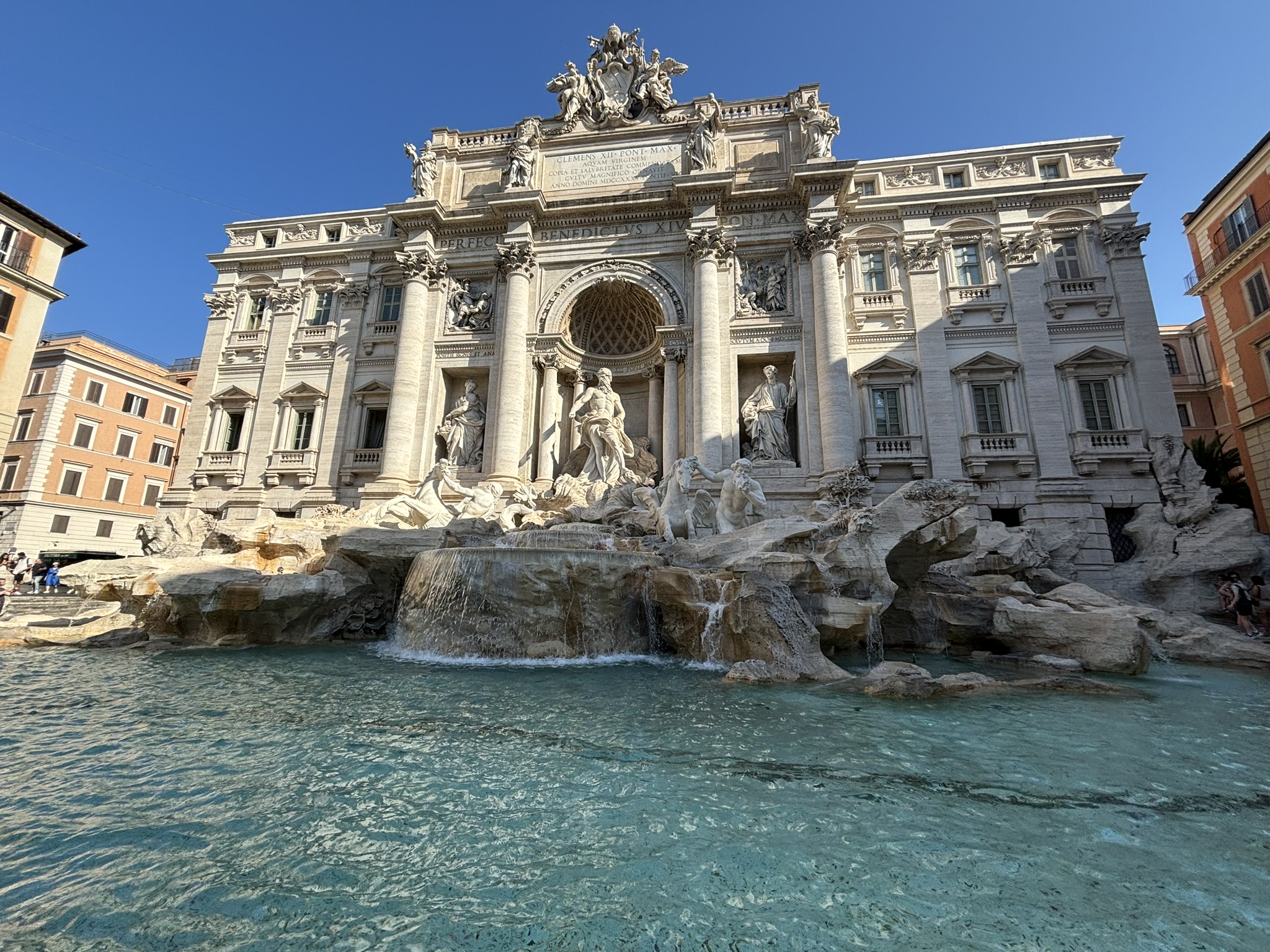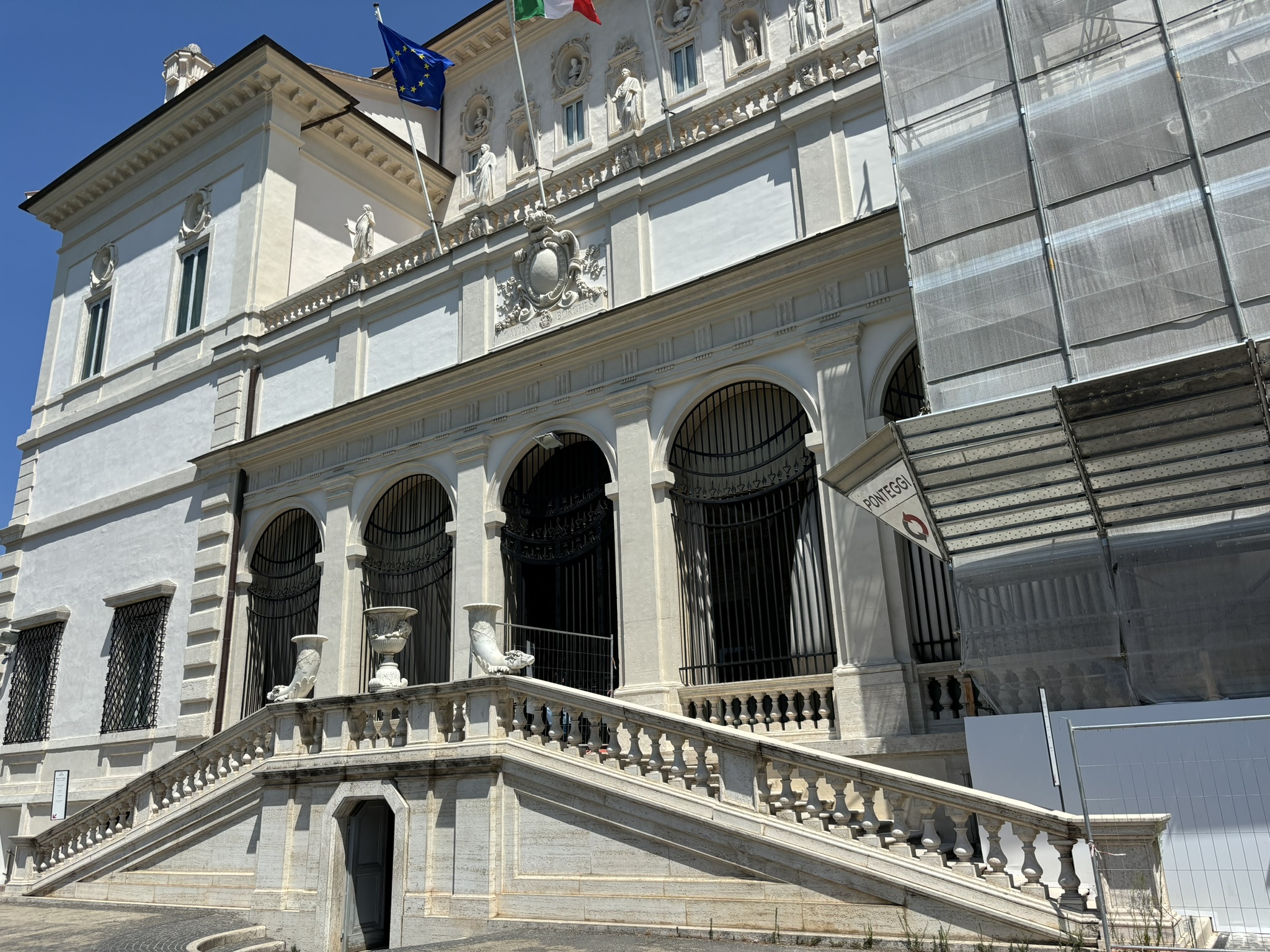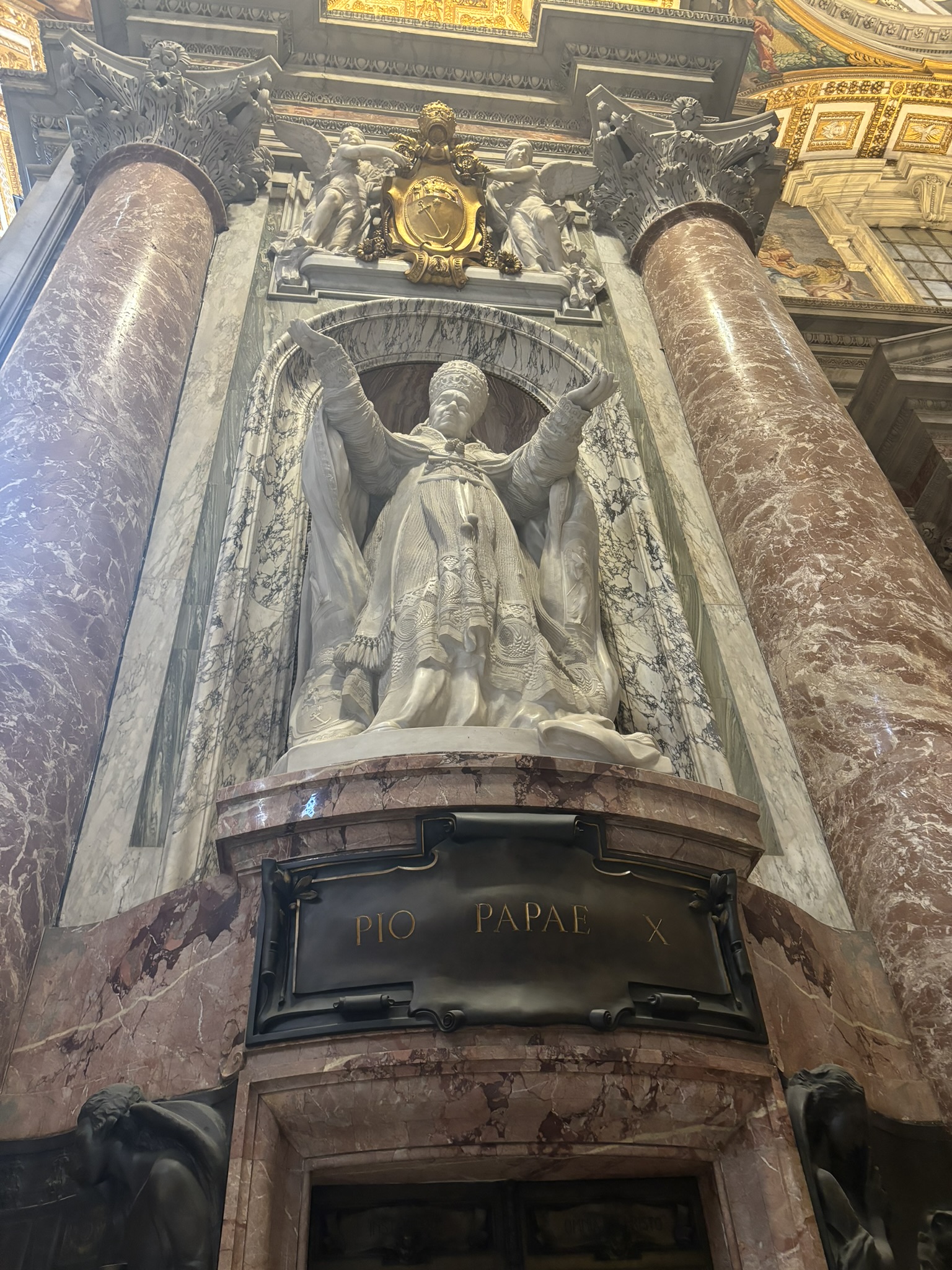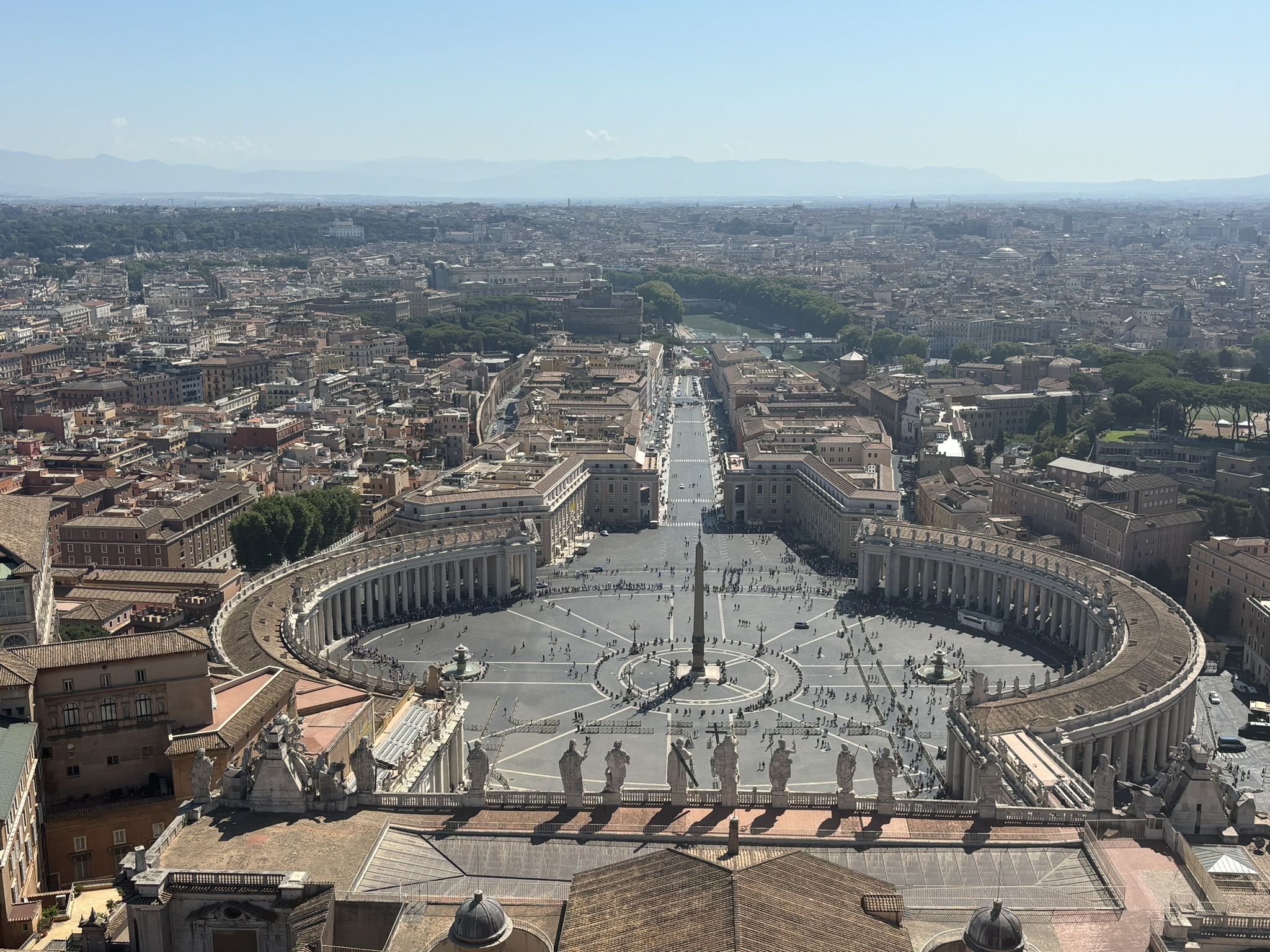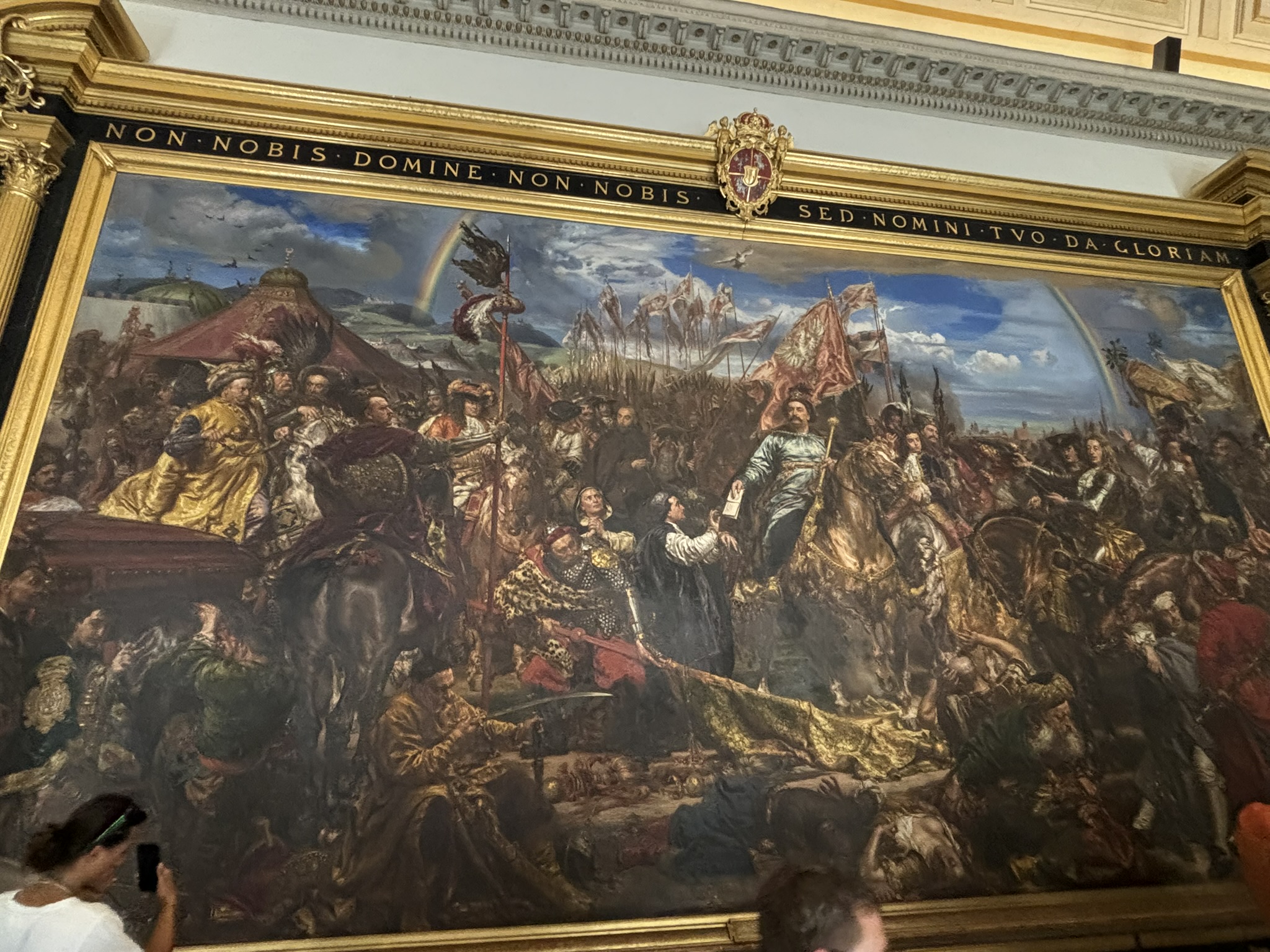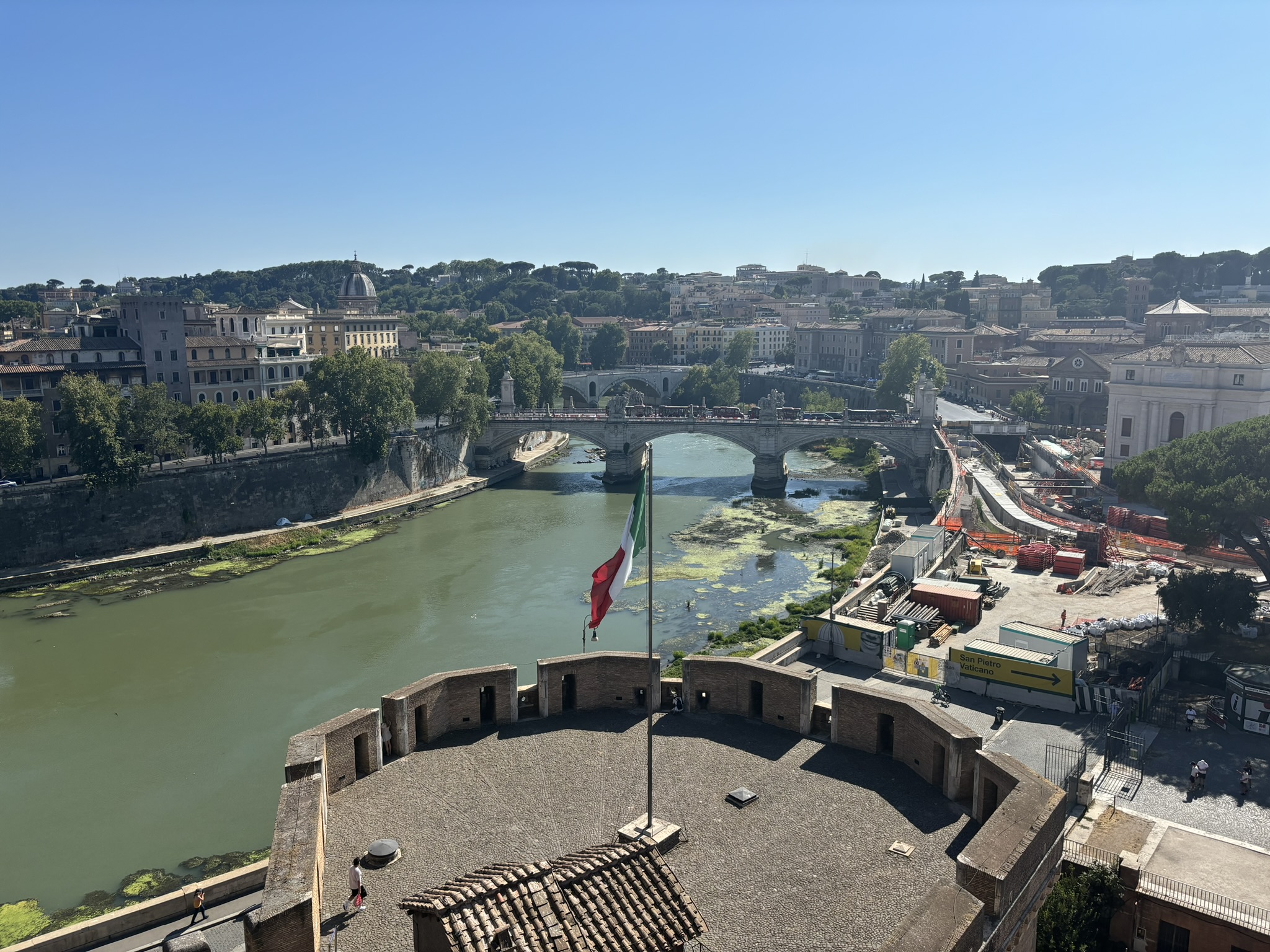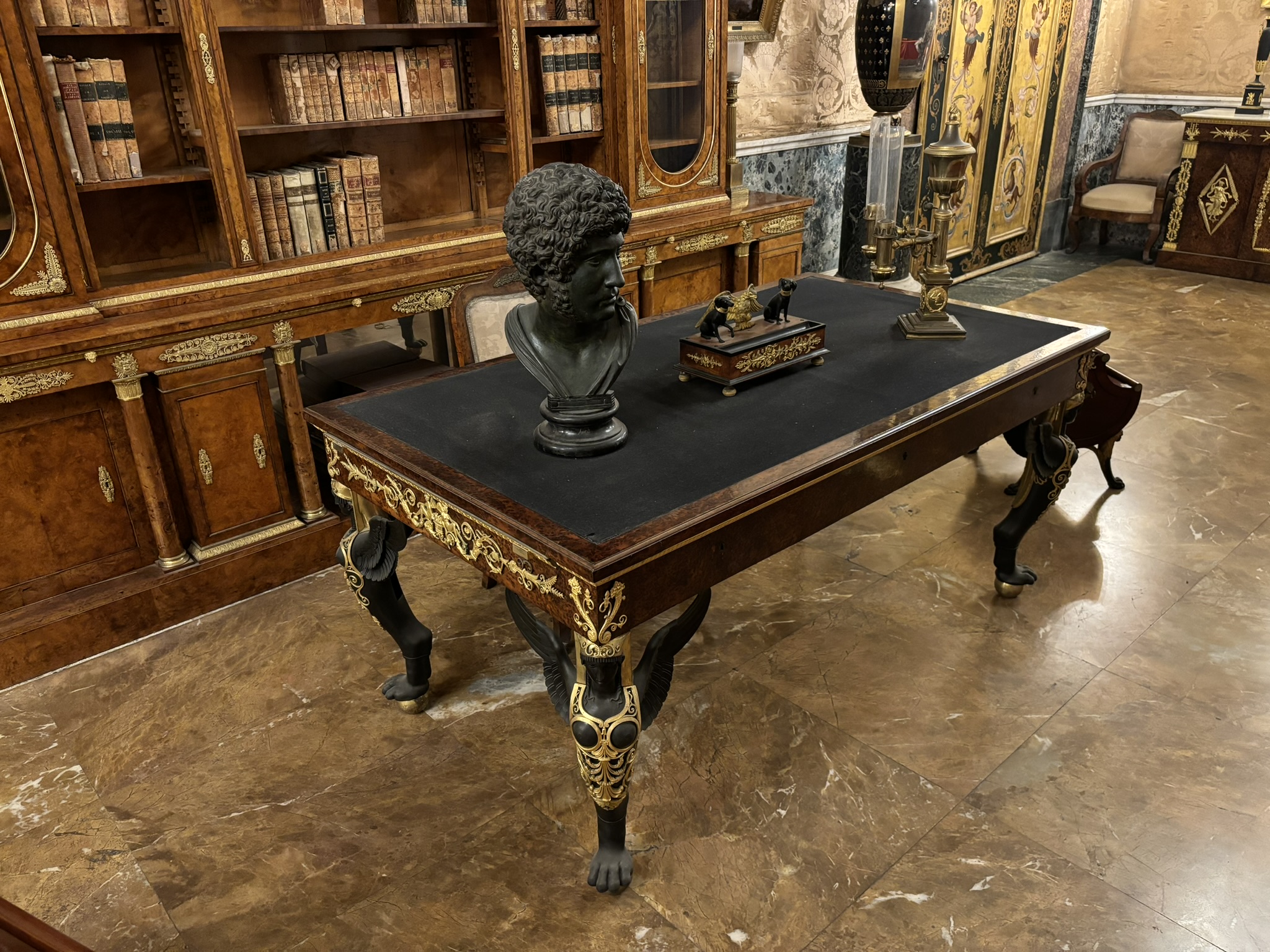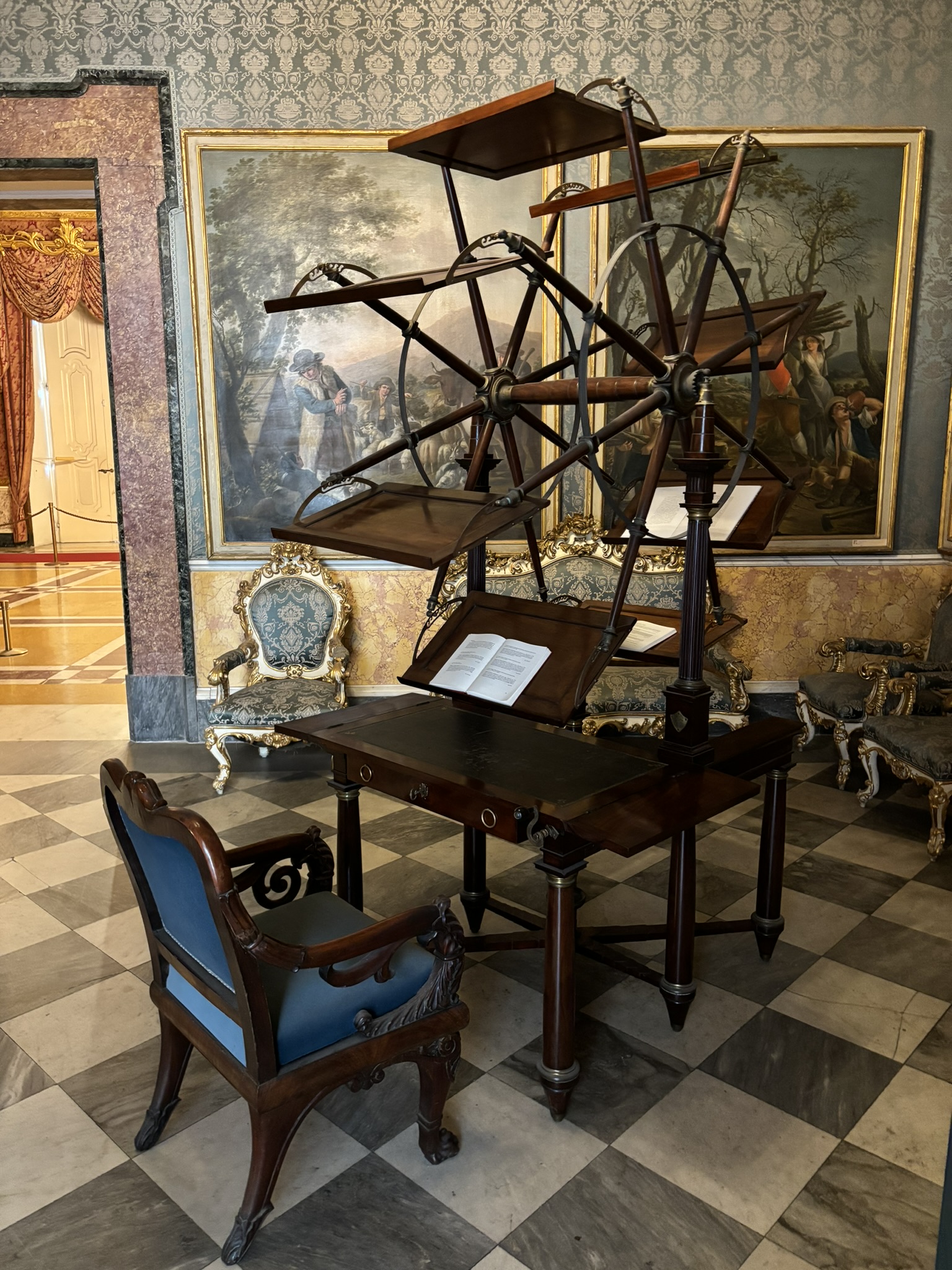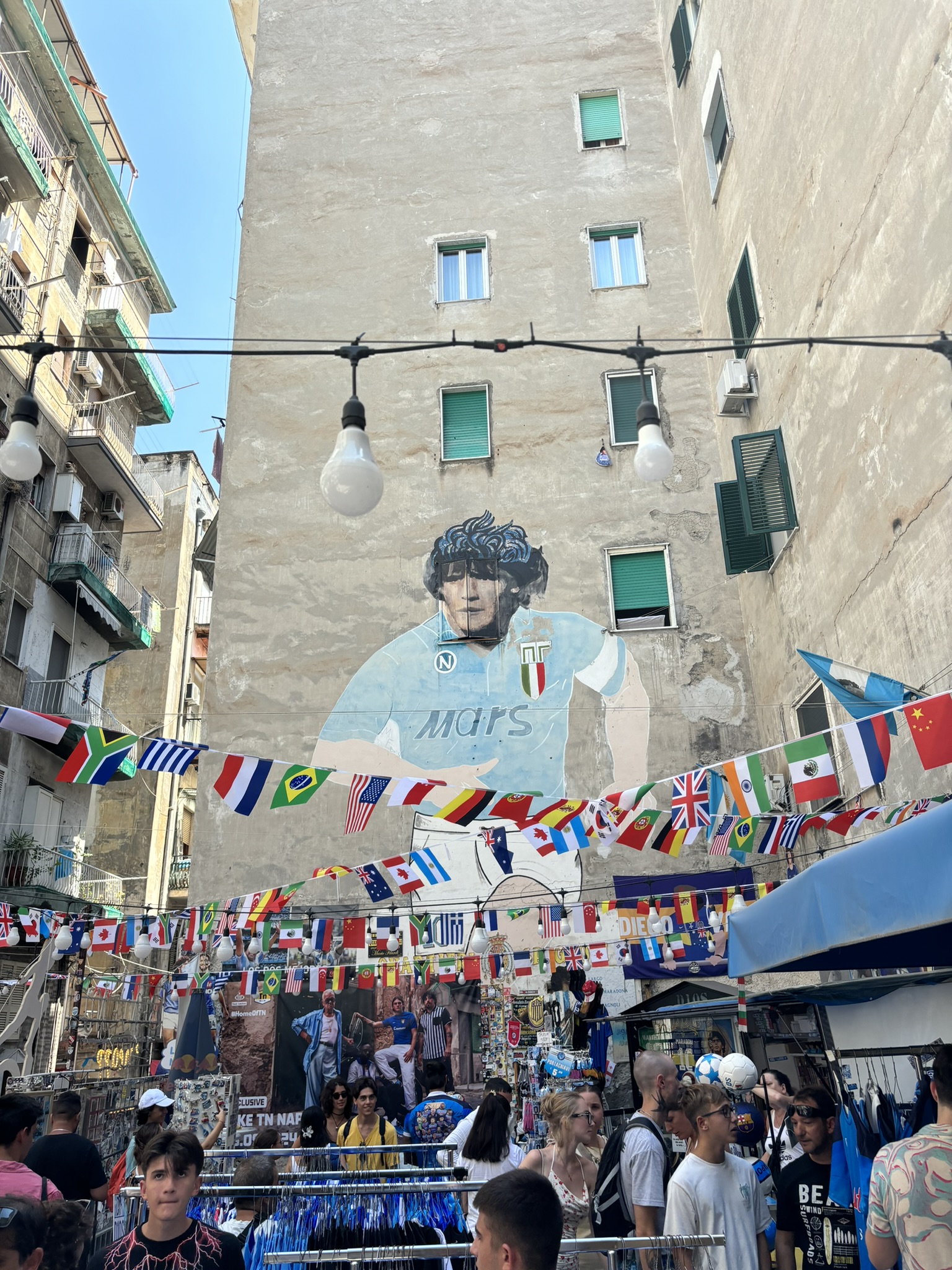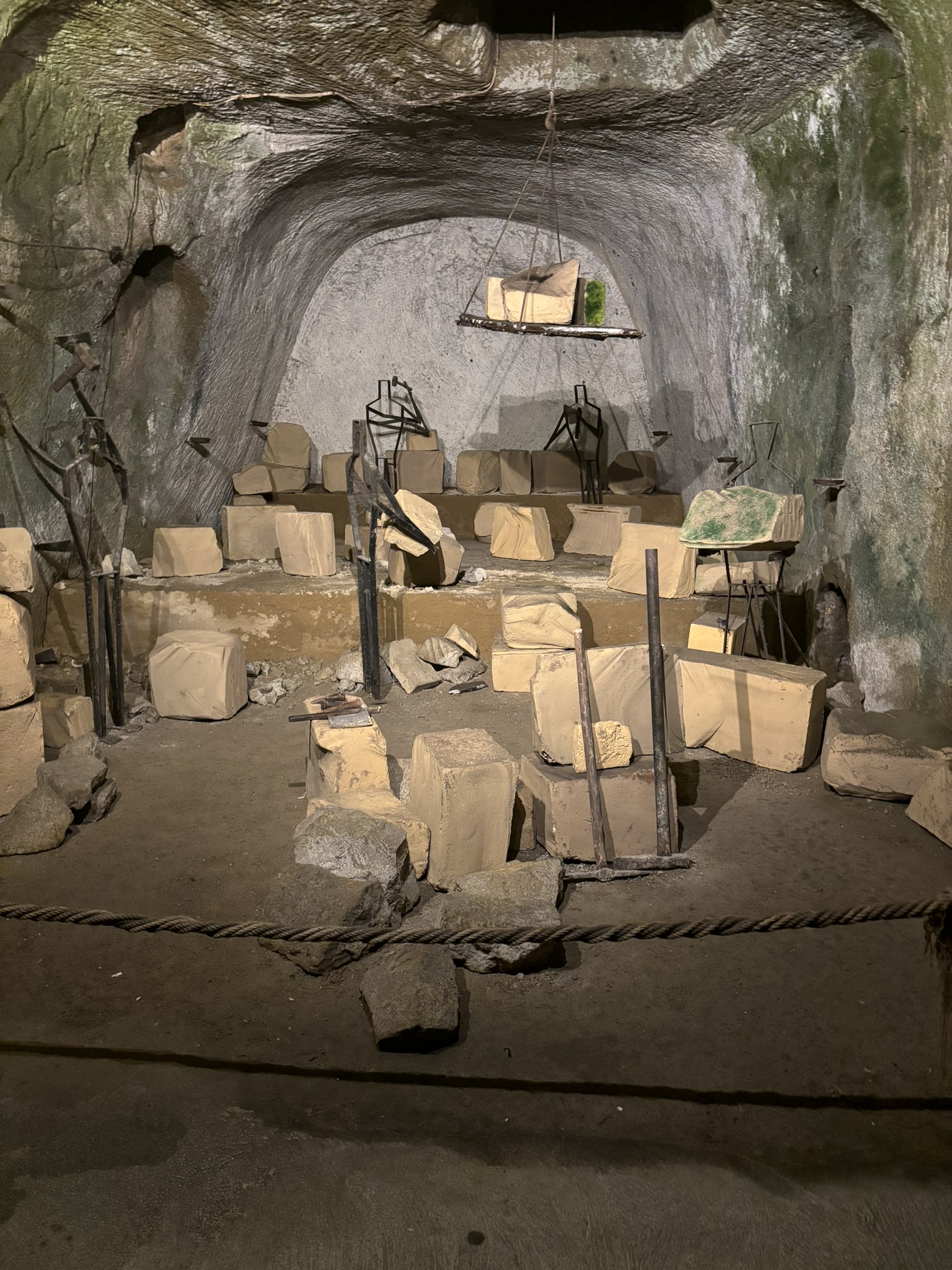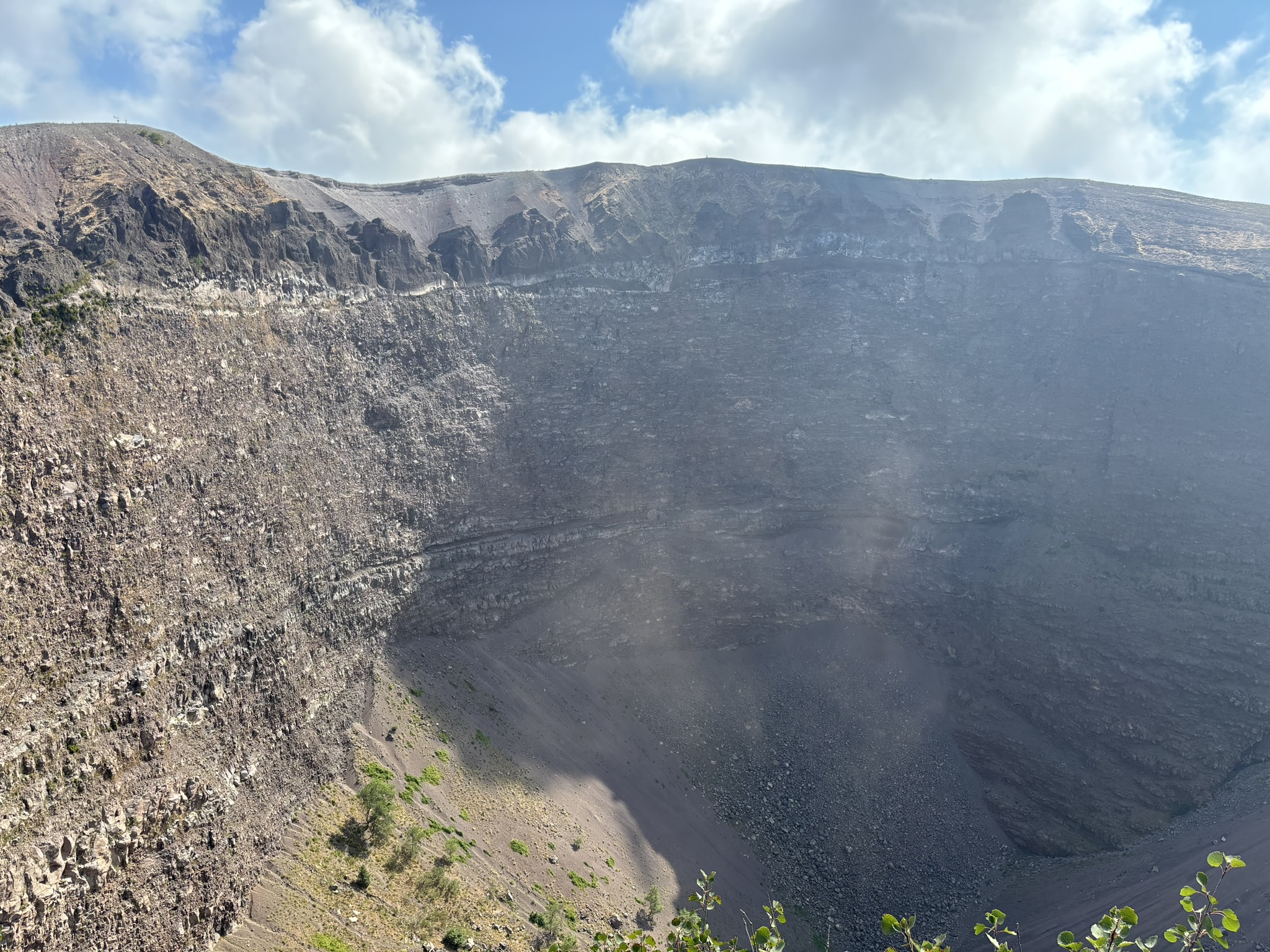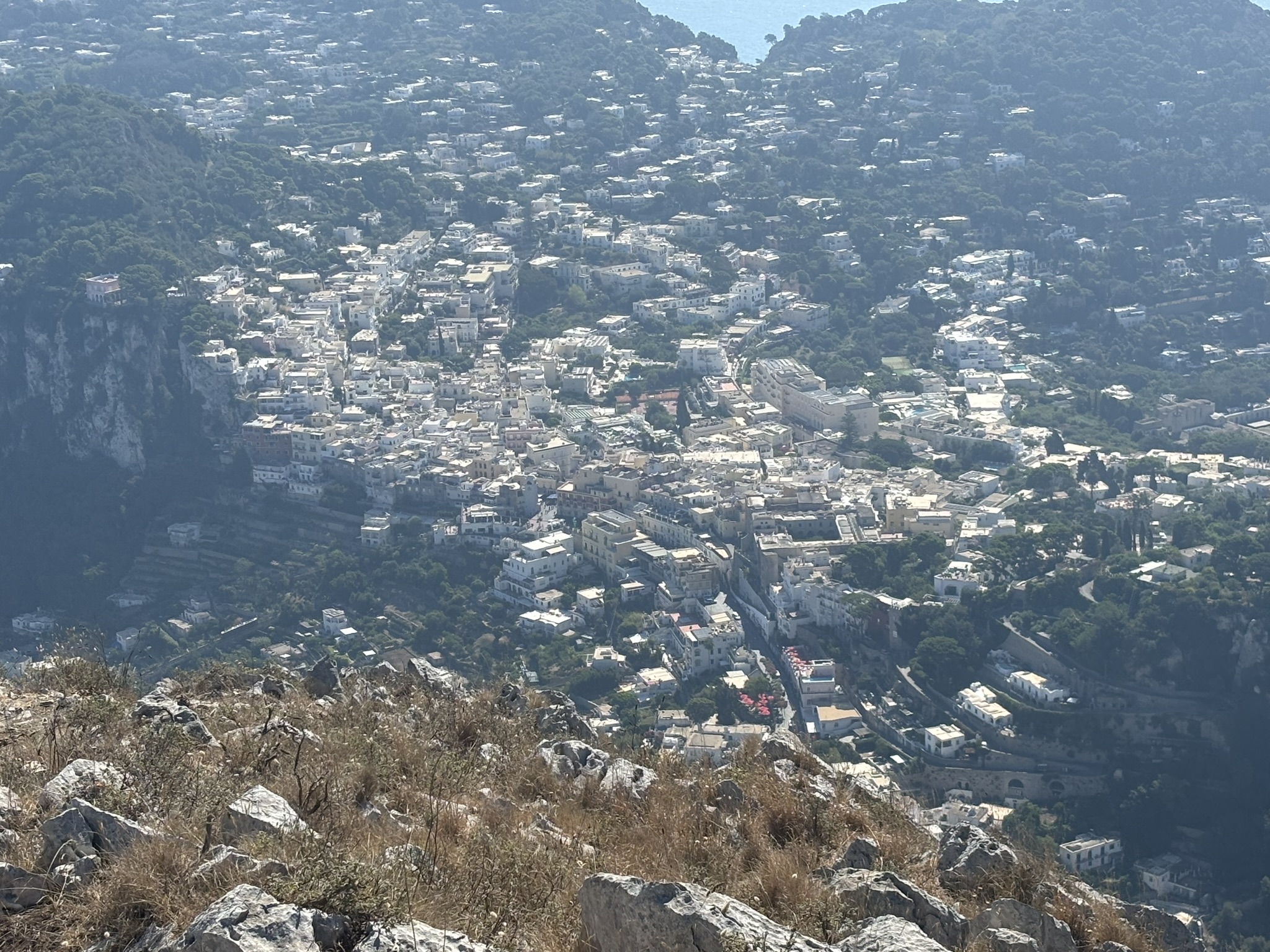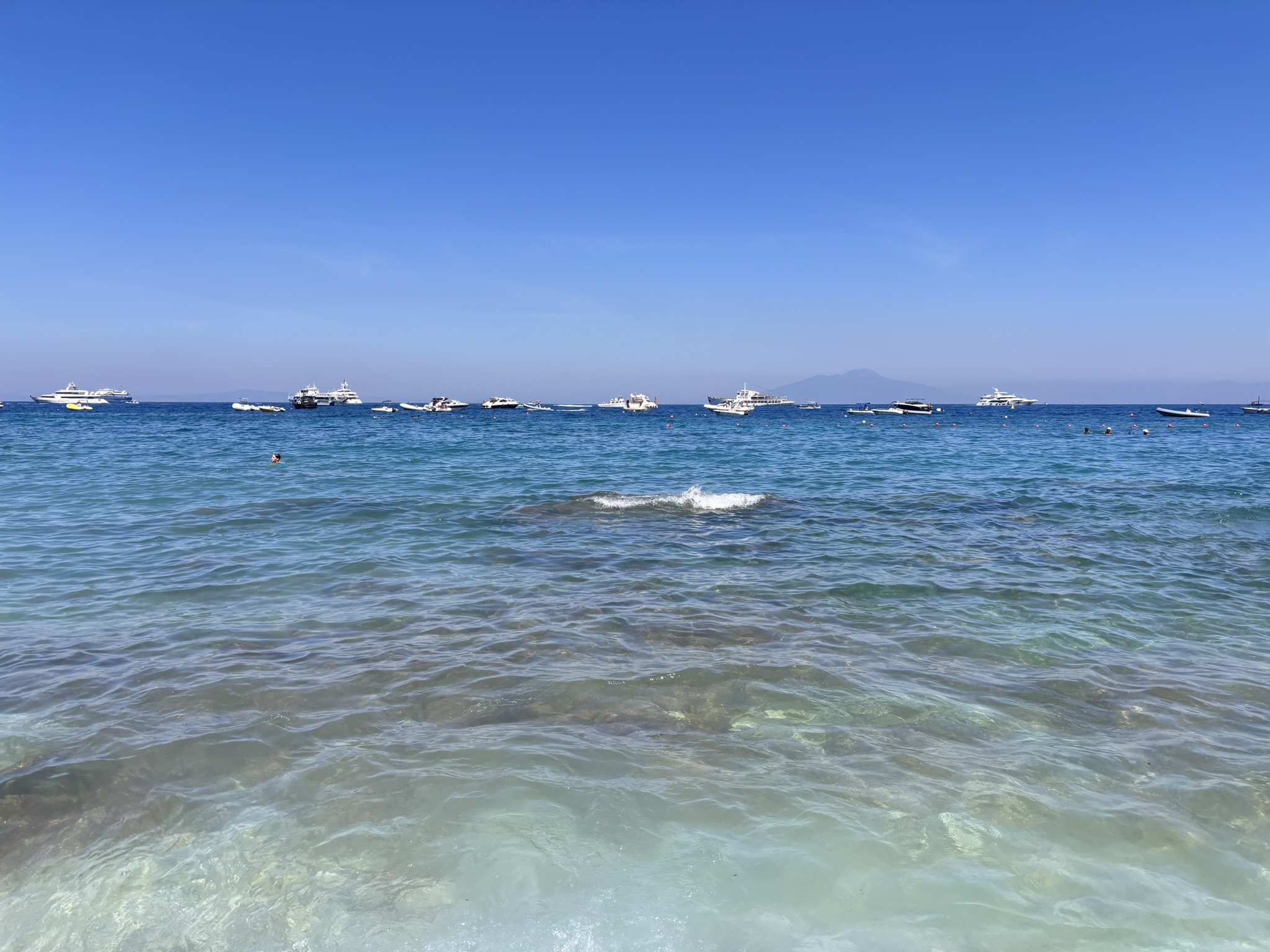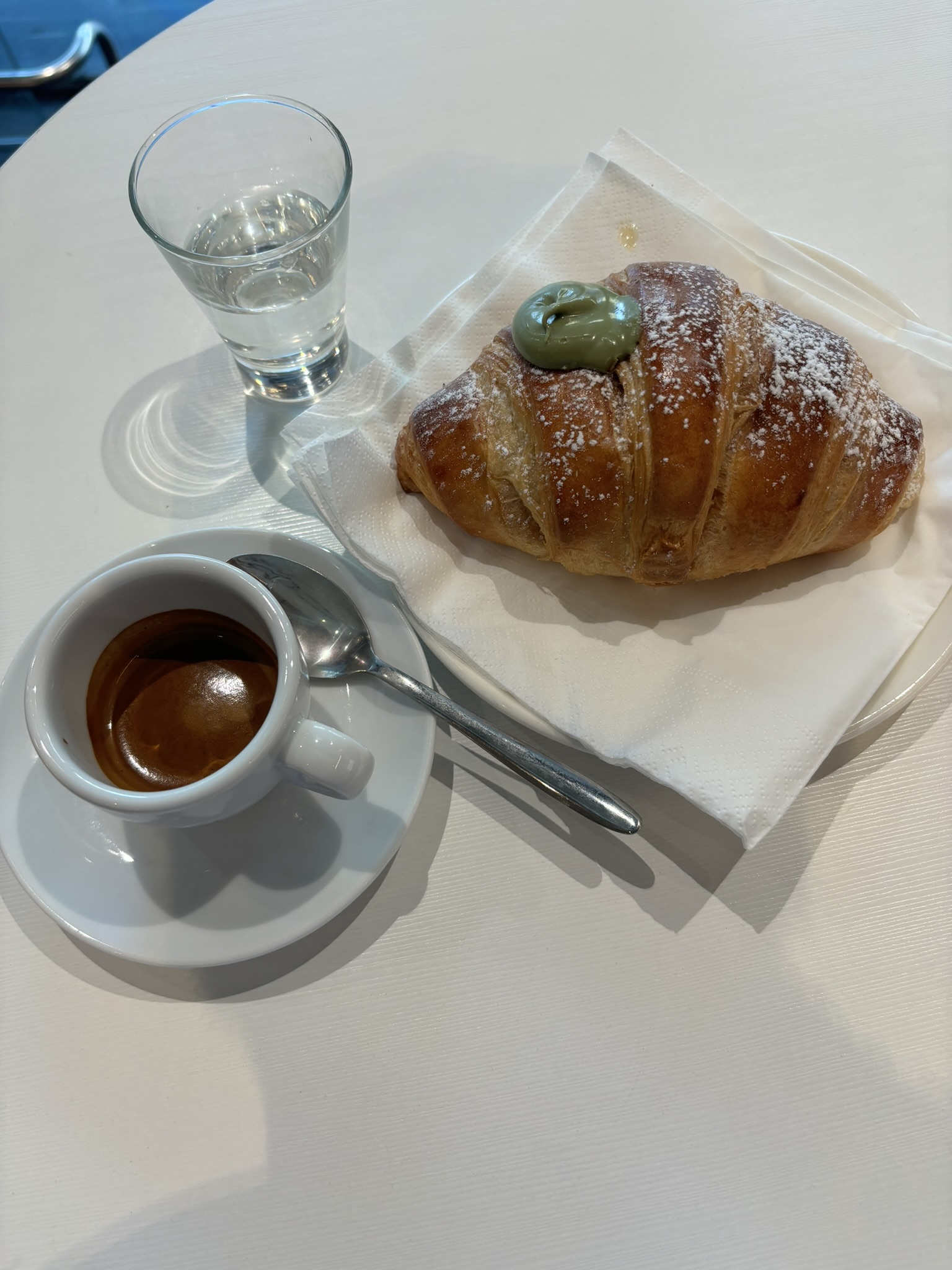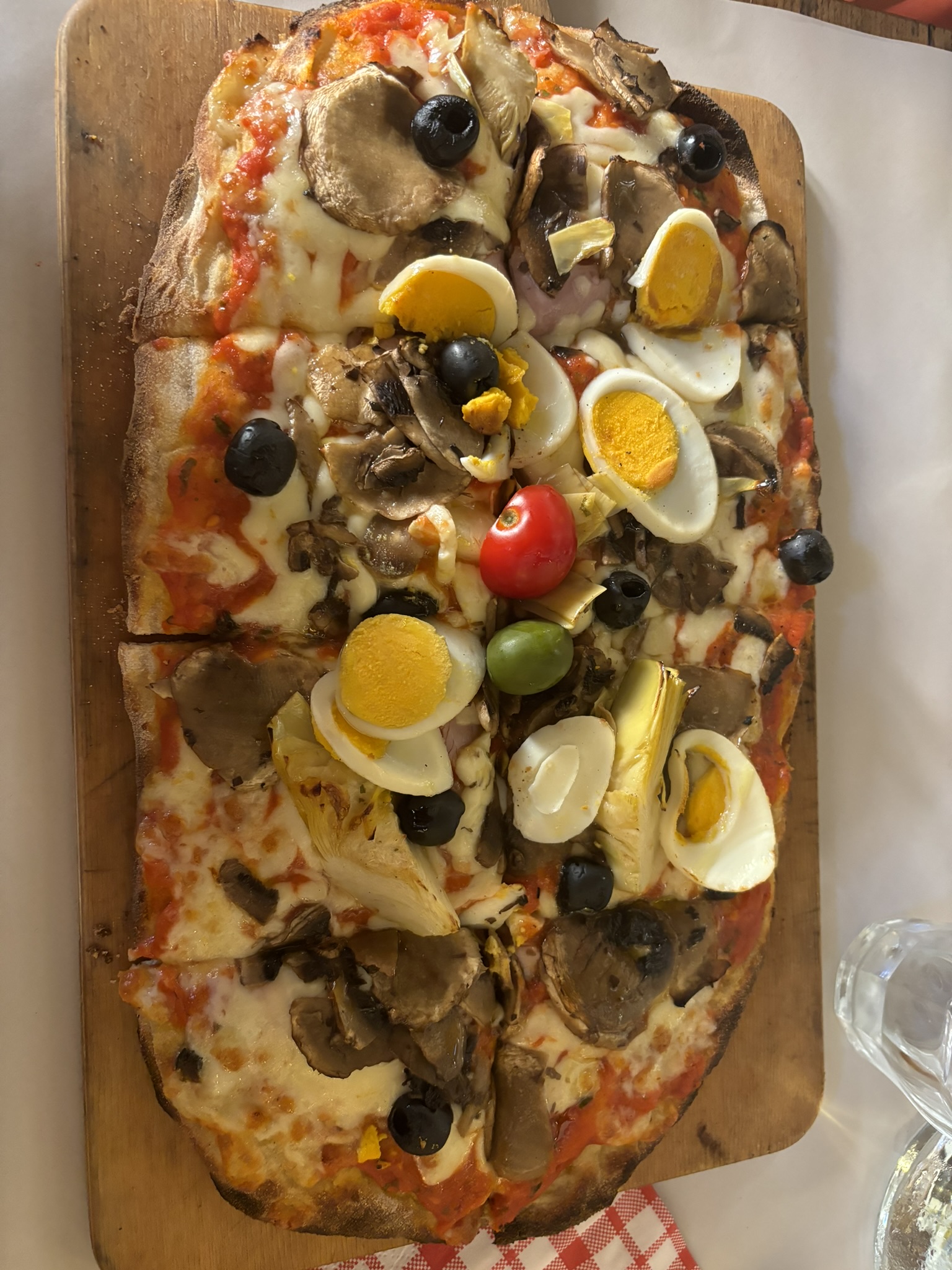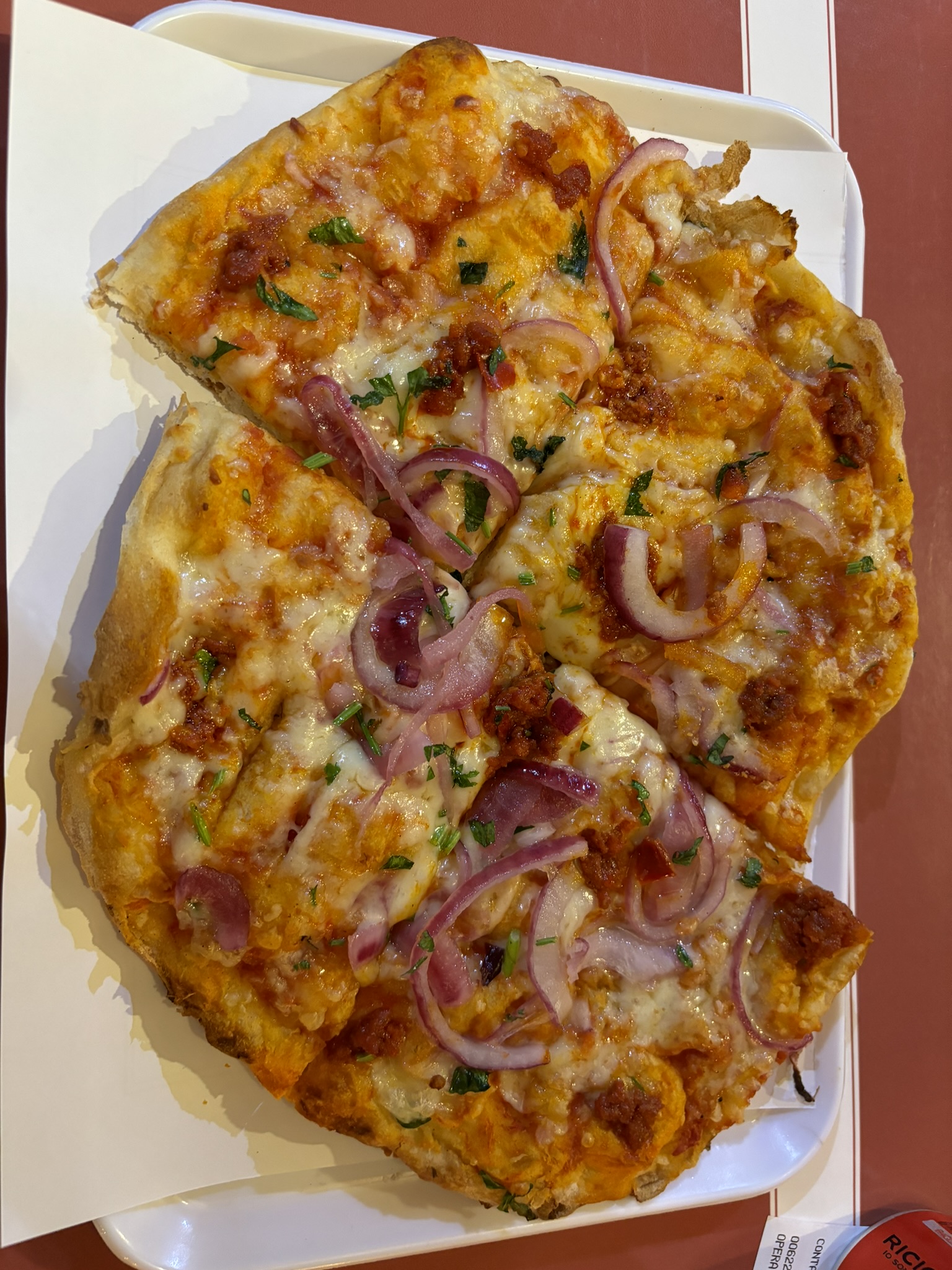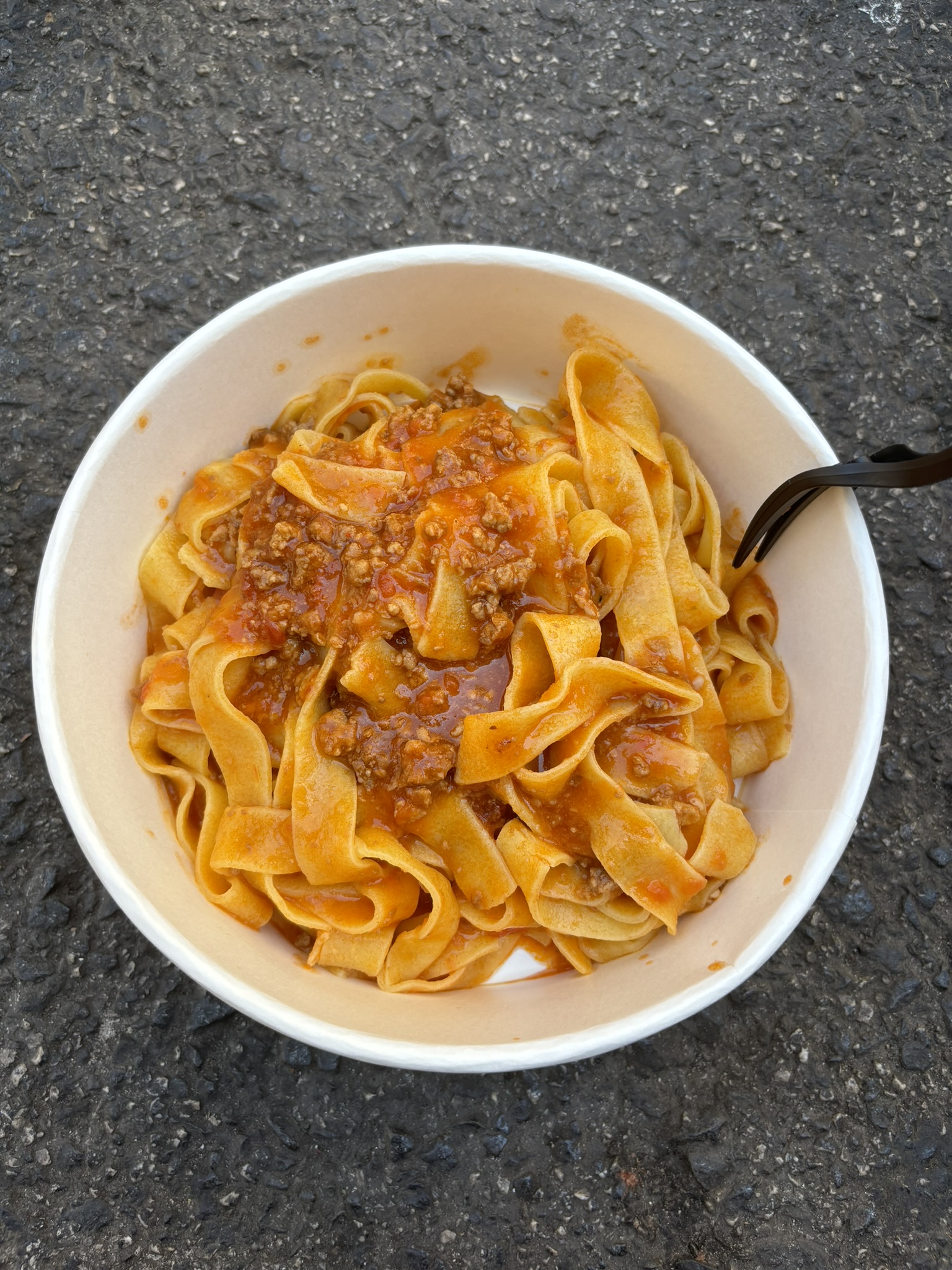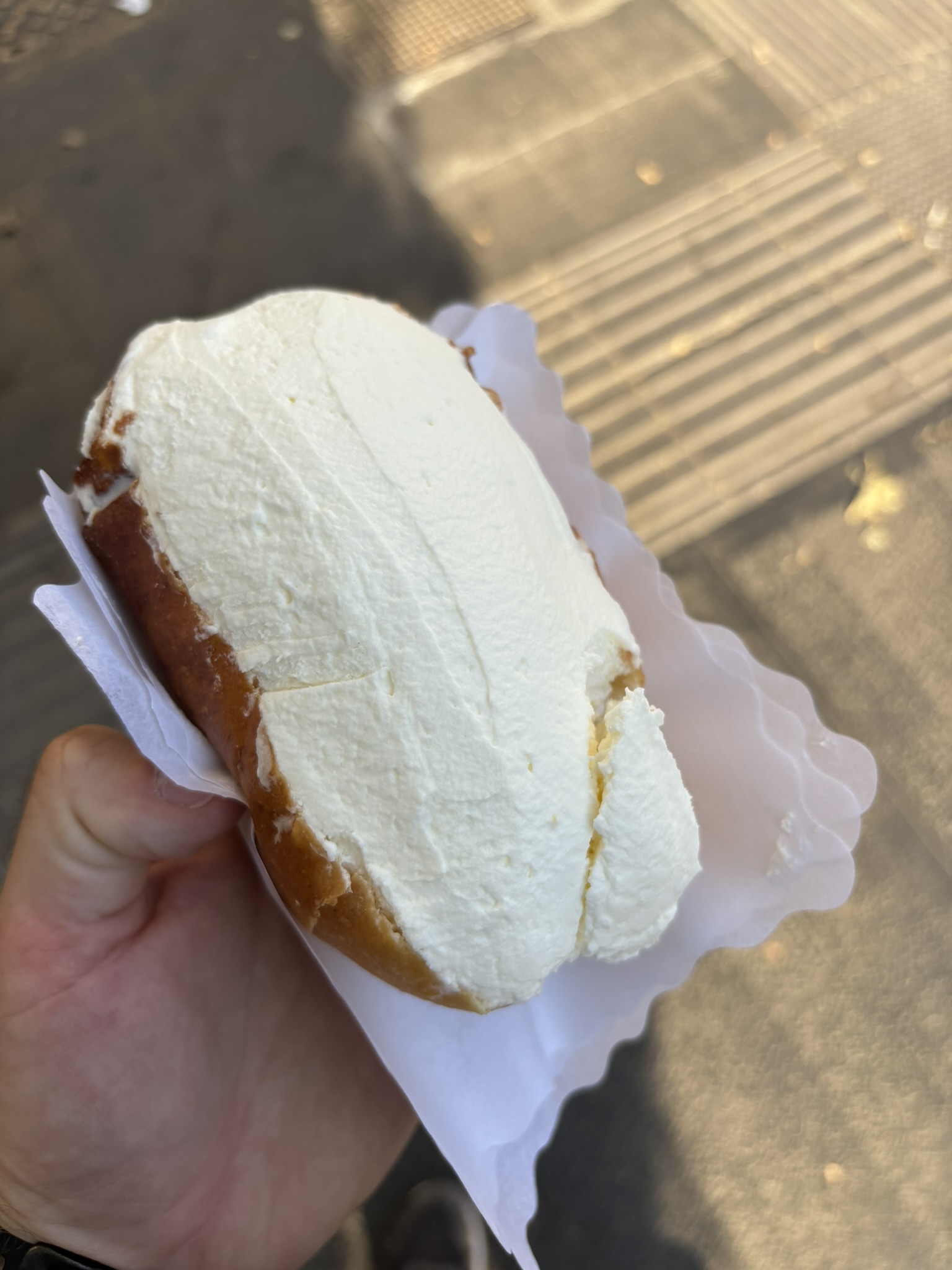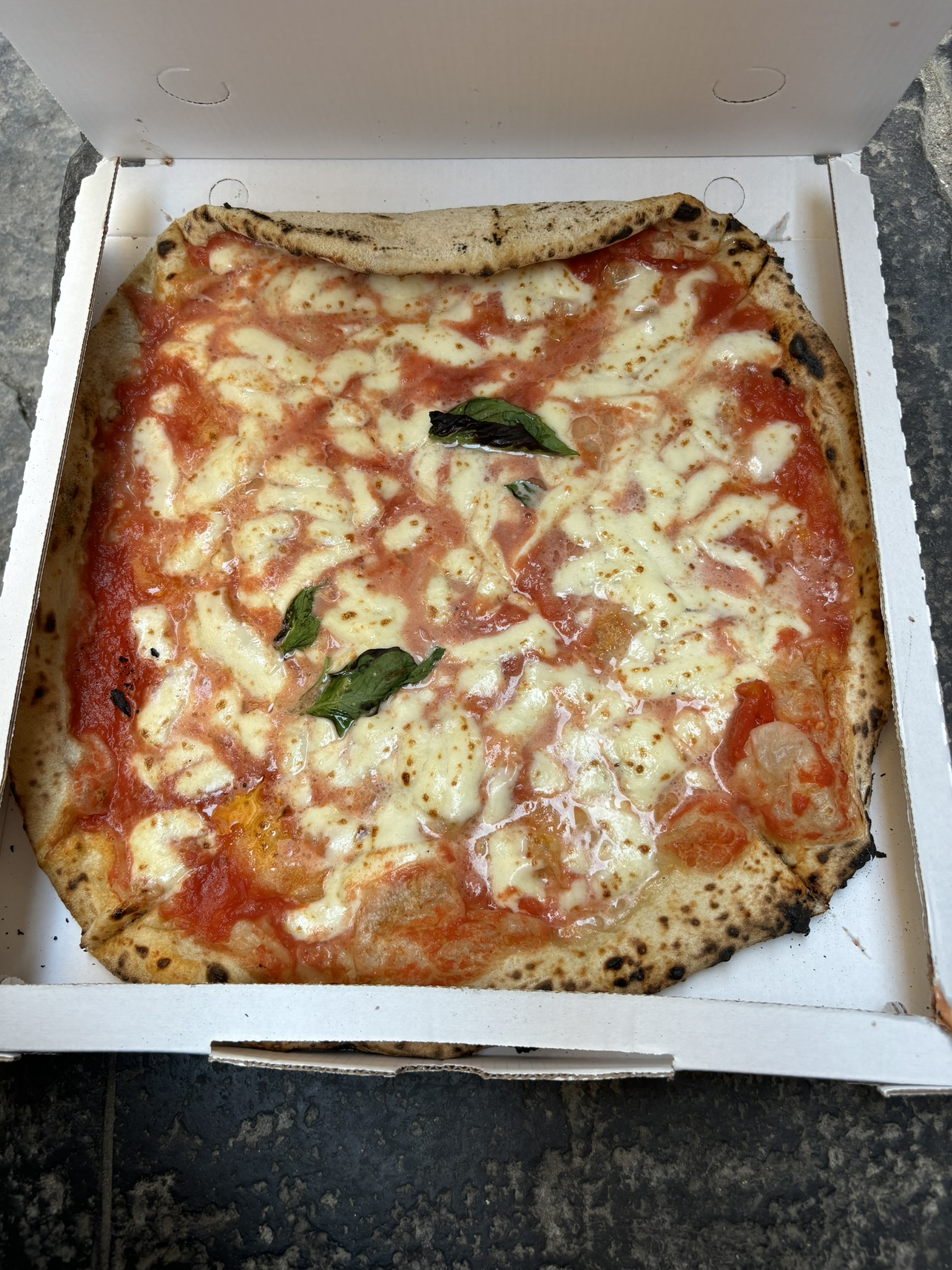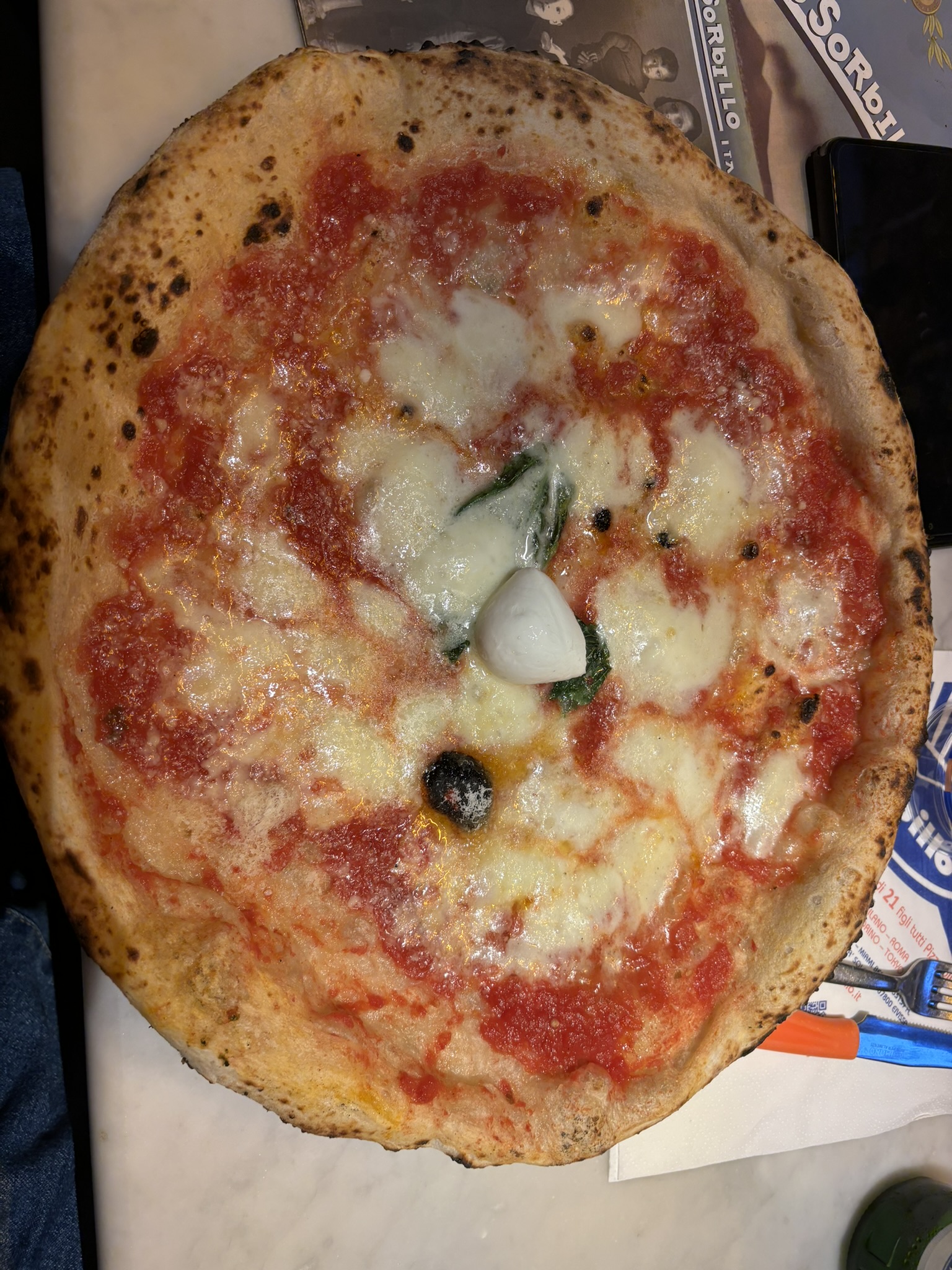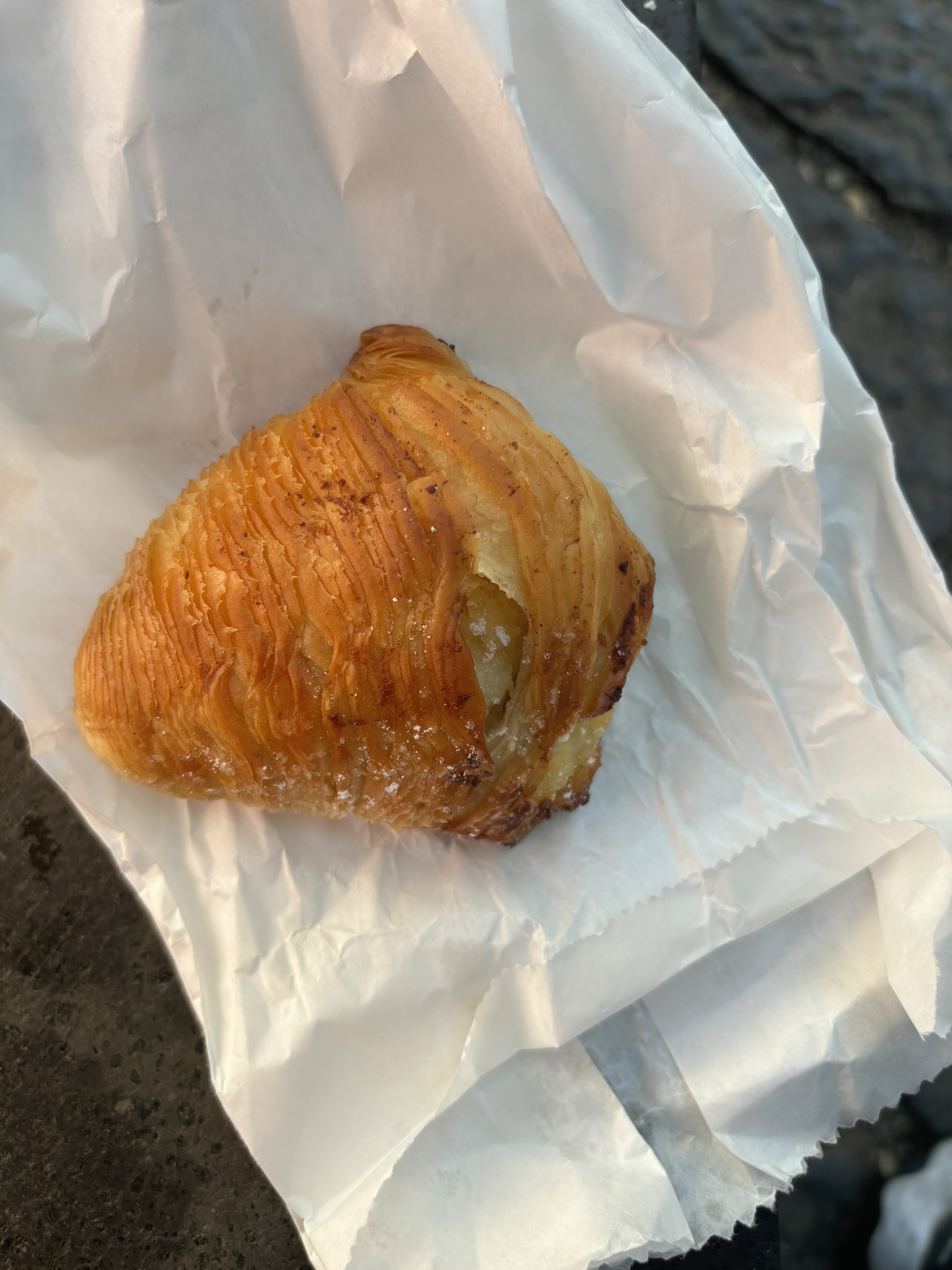Italy had always been on my travel bucket list, and this year, I finally made it! Over six incredible days, I explored the historic streets of Rome, the lively atmosphere of Naples, and even ventured up the towering Mt. Vesuvius. Here’s a little glimpse into my unforgettable Italian adventure.
Day 1: Walking Through Ancient Rome
My trip kicked off in the heart of ancient Rome, where history is literally at your feet. First up was the Colosseum, and wow, pictures just don’t do it justice. Standing in this massive amphitheater where gladiators once fought gave me chills. It’s one thing to see it in movies, but being there in person, surrounded by those ancient stone walls, makes you feel like you’ve stepped into another time. The stories you hear on the tour – from the epic battles to the grand spectacles – really bring the place to life. I could almost hear the roar of the crowds and the clash of swords echoing through the ages.
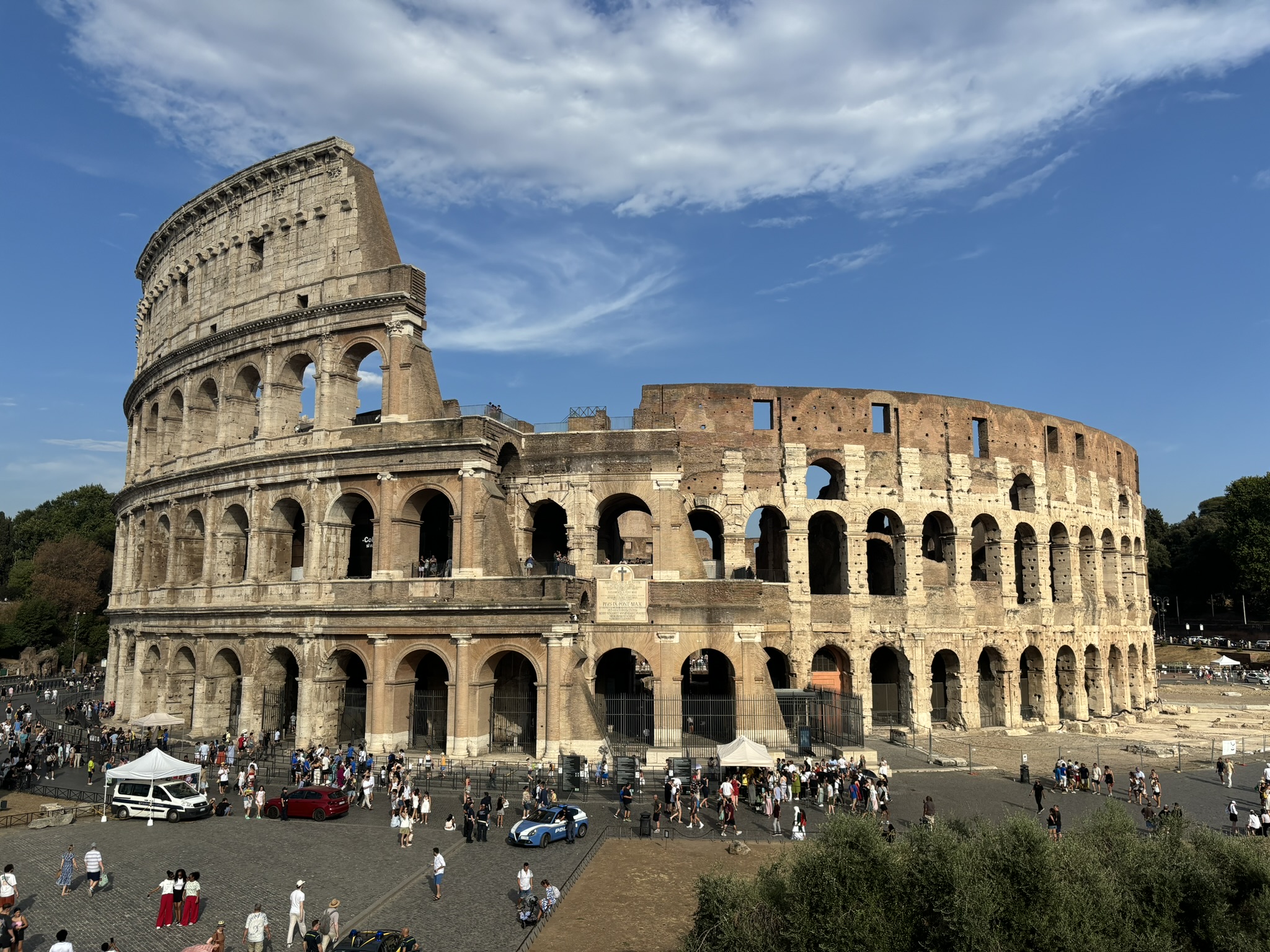
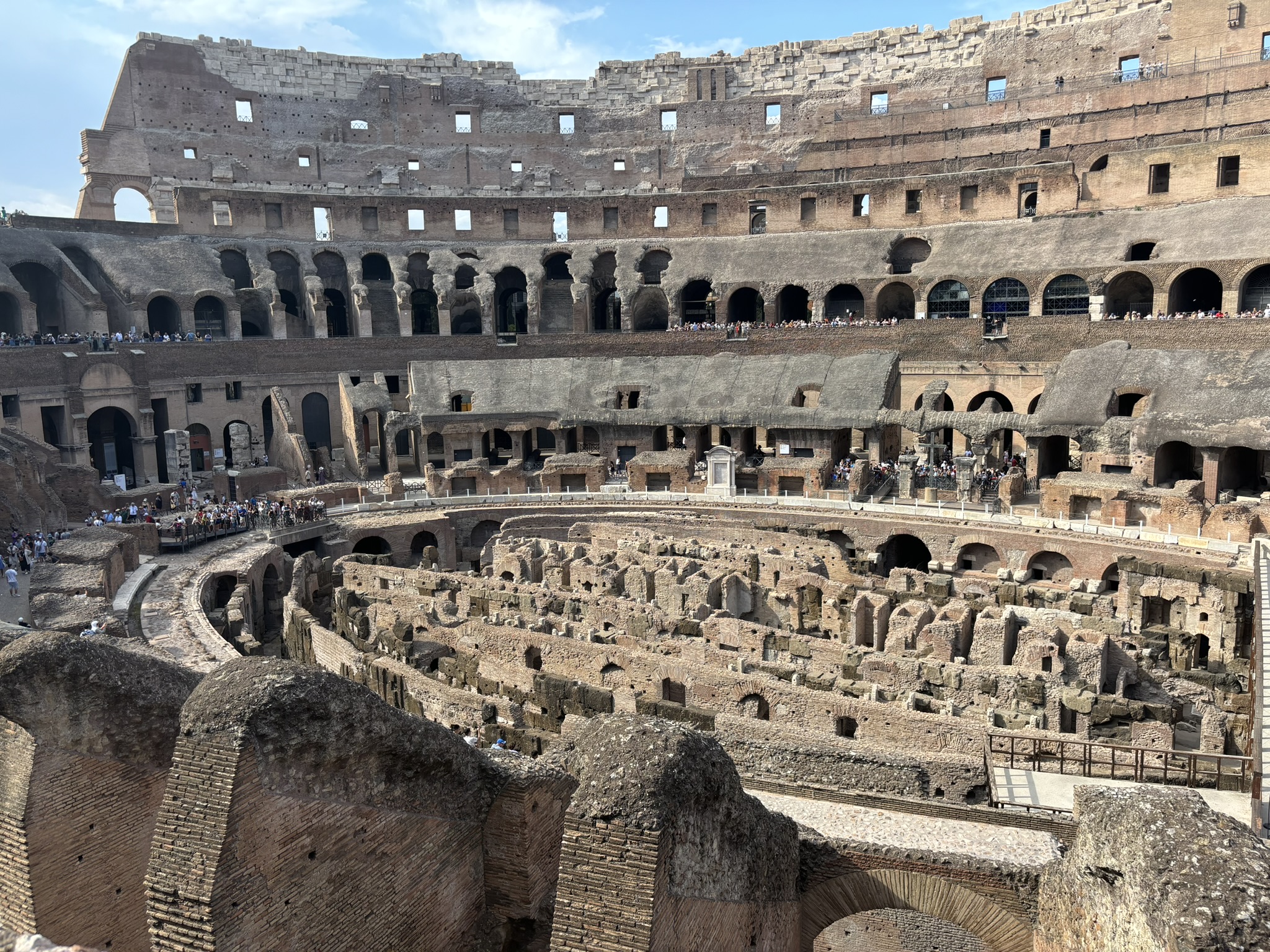
Right next to the Colosseum stands the Arch of Constantine, one of the most impressive triumphal arches in Rome. This massive structure was built to commemorate Constantine’s victory at the Battle of Milvian Bridge, and it’s covered in intricate carvings that depict scenes of battles, victories, and sacrifices. The arch is a fascinating blend of old and new Roman art, as parts of it were taken from earlier monuments and repurposed here. Standing under it, you get a sense of the grandiosity of Roman emperors and their love for monumental architecture.
From there, I made my way to the Roman Forum, which was like an open-air museum of ancient ruins. It’s crazy to think that this was once the bustling heart of Rome, with temples, markets, and government buildings all packed into this space. I wandered through the remnants of what used to be the most important buildings in ancient Rome, imagining the hustle and bustle of Roman citizens going about their daily lives. The Temple of Saturn and the Arch of Titus were particularly impressive, standing tall despite the centuries that have passed.
Next, I climbed up the Palatine Hill, one of the most famous of Rome’s seven hills and the legendary birthplace of the city. The views from up there were spectacular – you can see the entire Forum below and get a sense of how powerful Rome must have looked back in the day. The hill is also home to the ruins of several palaces, where Rome’s elite once lived. Walking through the ancient ruins surrounded by lush gardens felt like stepping into a different world.
Day 2: The Romantic Side of Rome
After immersing myself in history, I spent the next day exploring some of Rome’s most iconic spots. I started at the Trevi Fountain – yes, I threw a coin in, and yes, I’m already planning my return! The fountain is stunning, especially with the early morning light shining on the marble. The sound of the water and the sight of the intricately carved figures make it one of the most beautiful fountains I’ve ever seen. There’s something magical about the place, and even though it was a bit crowded, I could still feel that special vibe that makes the Trevi Fountain so famous.
The Pantheon was next on my list. It’s one of the best-preserved ancient buildings in Rome, and the interior is just as impressive as the outside. The sunlight streaming through the oculus was a sight to behold. Walking inside, I was struck by the sheer size of the dome and the way the light beams down from the oculus, illuminating the entire space in this almost mystical way. It’s hard to believe that this engineering marvel was built nearly 2,000 years ago and still stands as a testament to the ingenuity of ancient Roman architects.
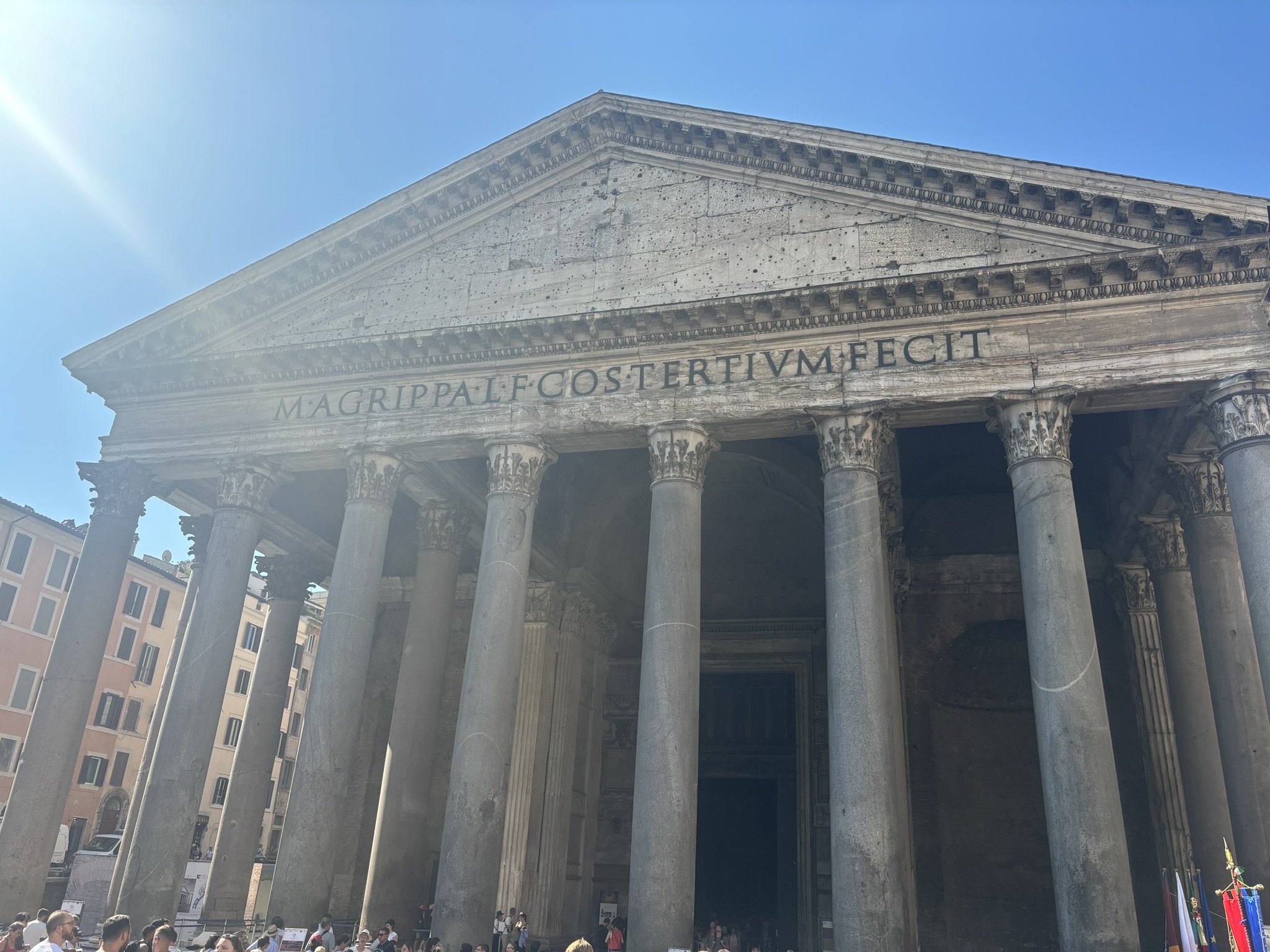
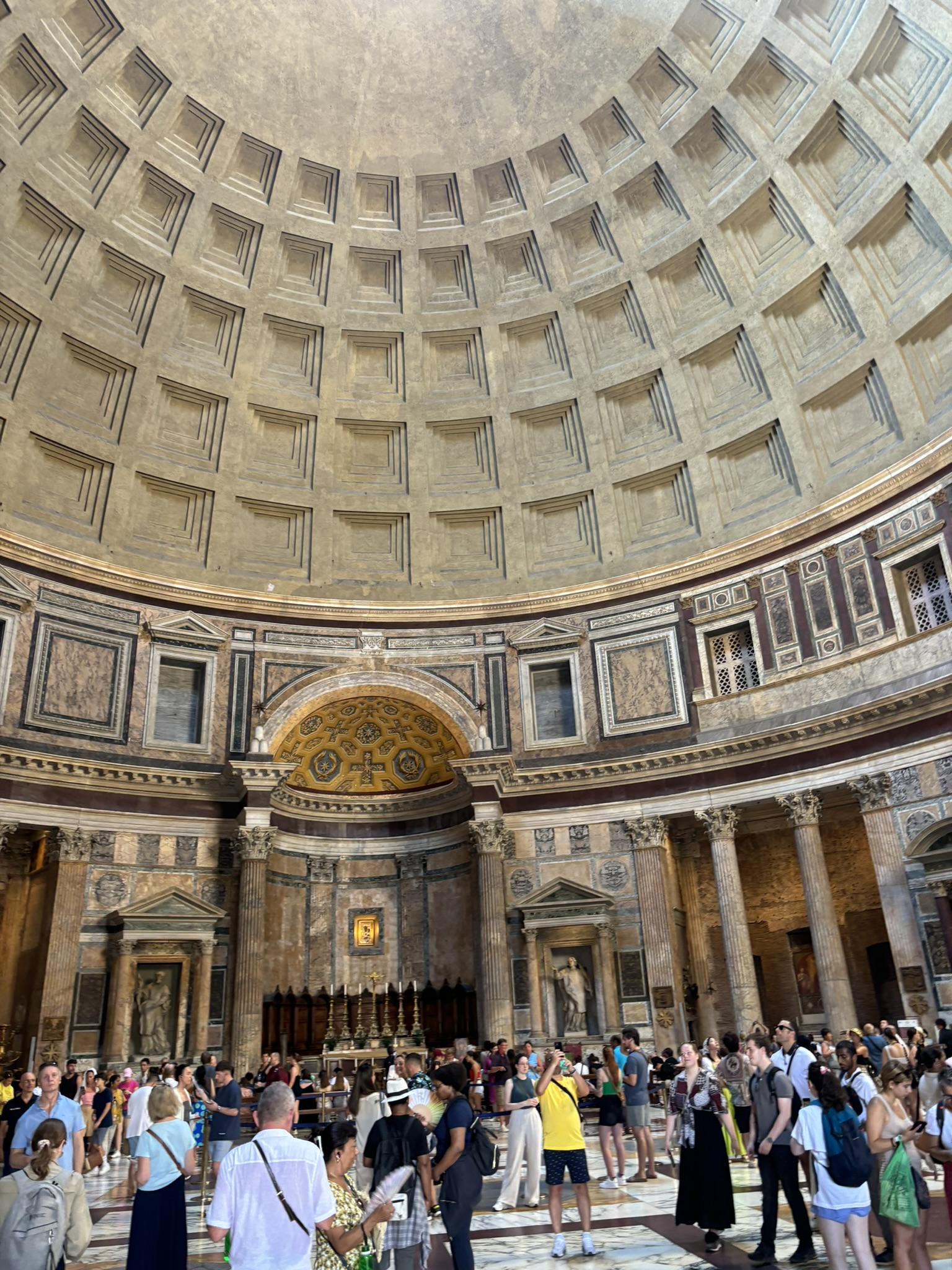
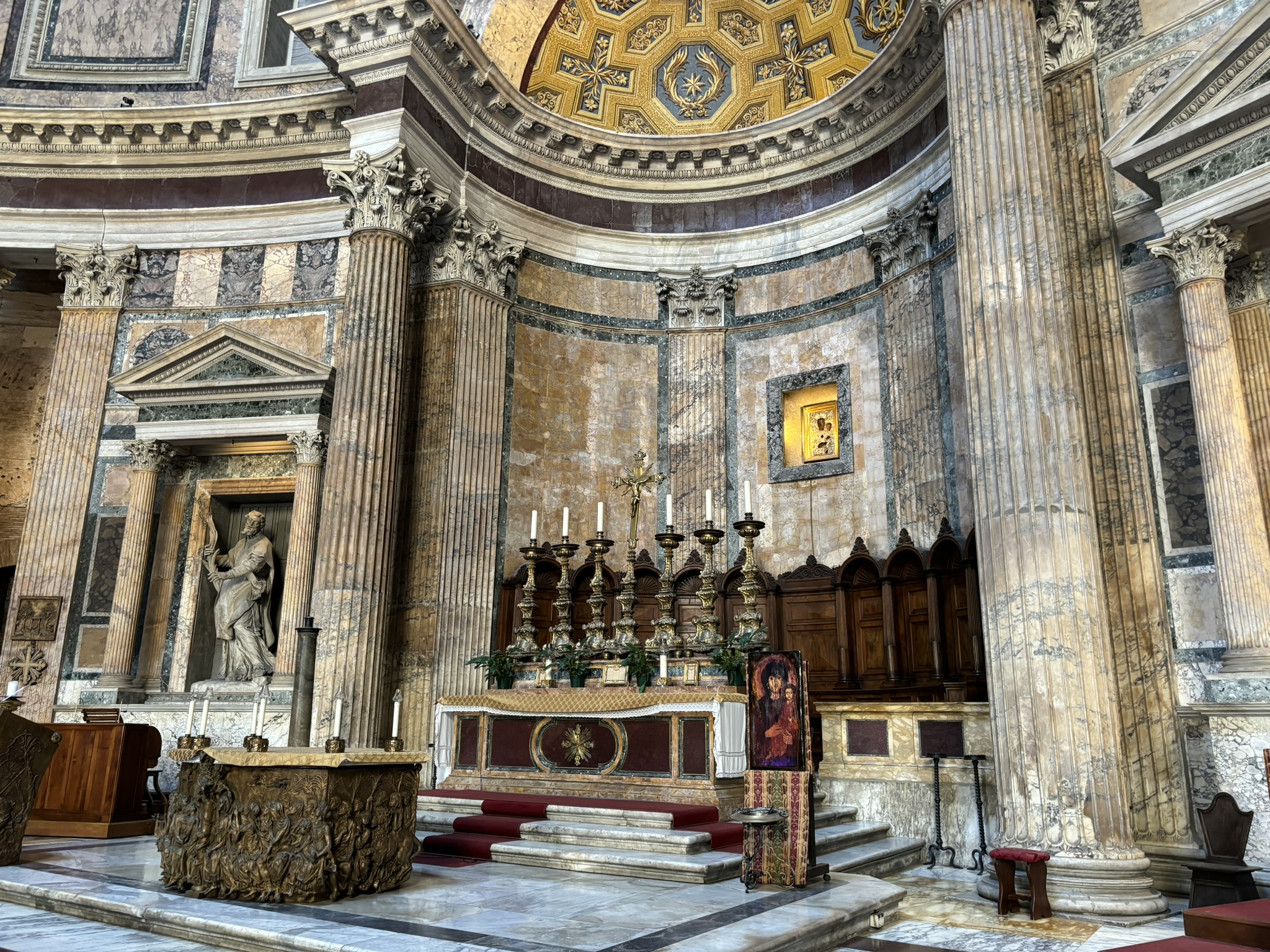
Afterward, I made my way to the Spanish Steps. The view from the top is fantastic, and the steps themselves are such an iconic part of Rome. I sat there for a while, watching as people from all over the world gathered to take photos and enjoy the scenery.
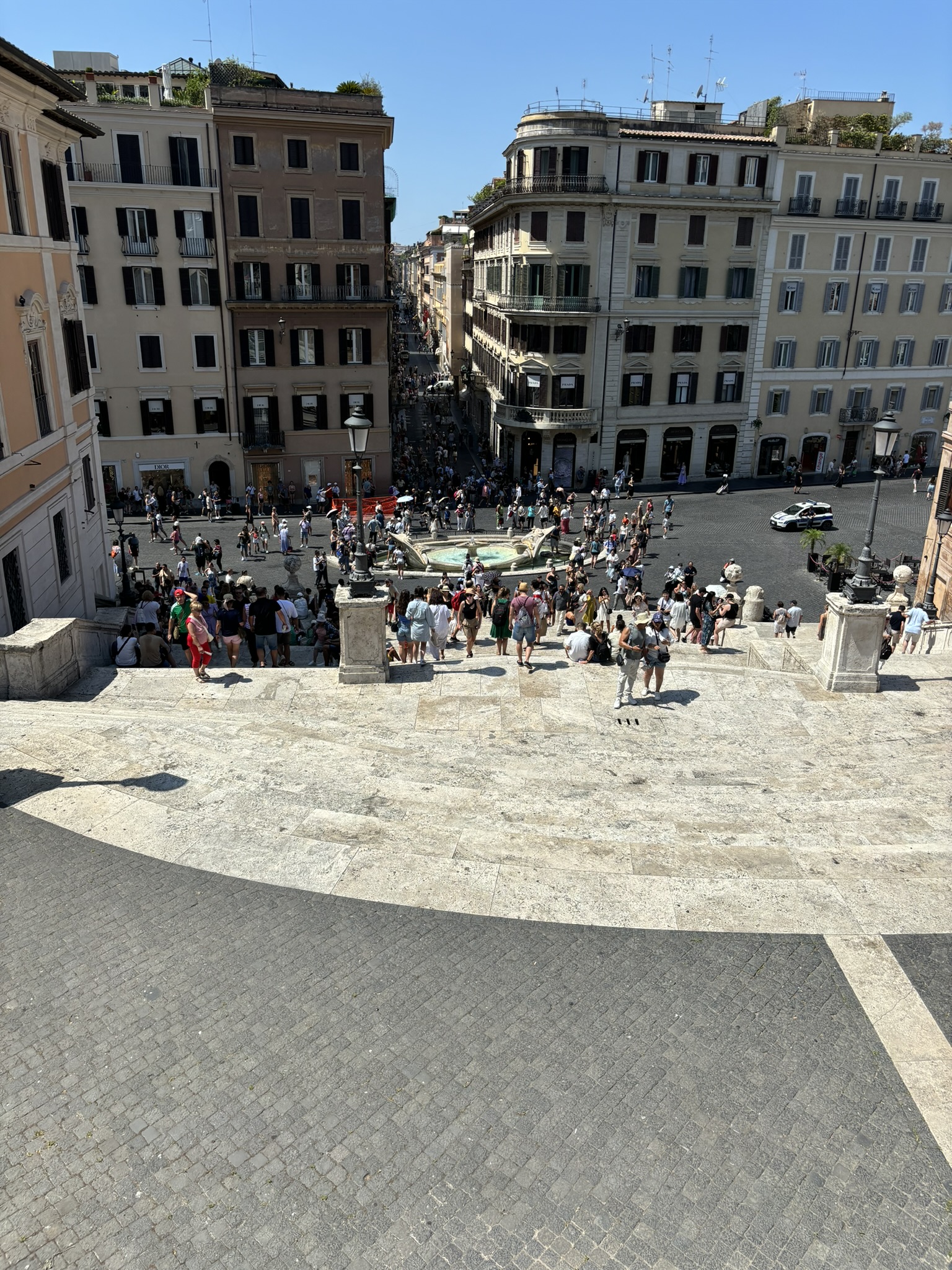
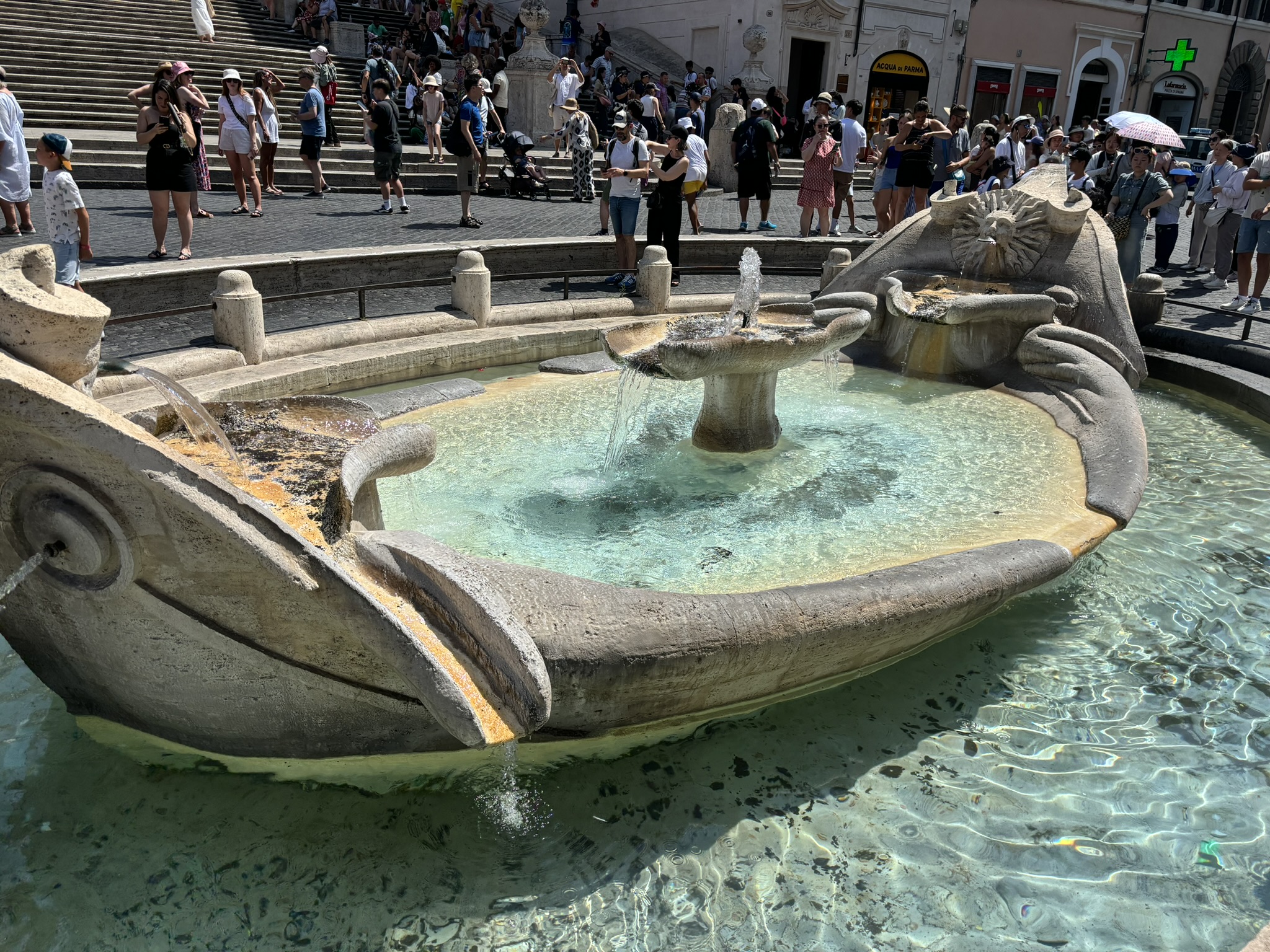
The highlight of my day was visiting the Galleria Borghese. Tucked away in the lush greenery of the Borghese Gardens, this gallery houses one of the most impressive art collections I’ve ever seen. I was particularly struck by the works of Caravaggio – his use of light and shadow is absolutely mesmerizing. His paintings have this incredible intensity that draws you in and makes you feel the emotion in each scene. The gallery is filled with treasures, from sculptures by Bernini to paintings by Raphael, but it was Caravaggio’s dramatic and evocative works that really left a lasting impression on me.

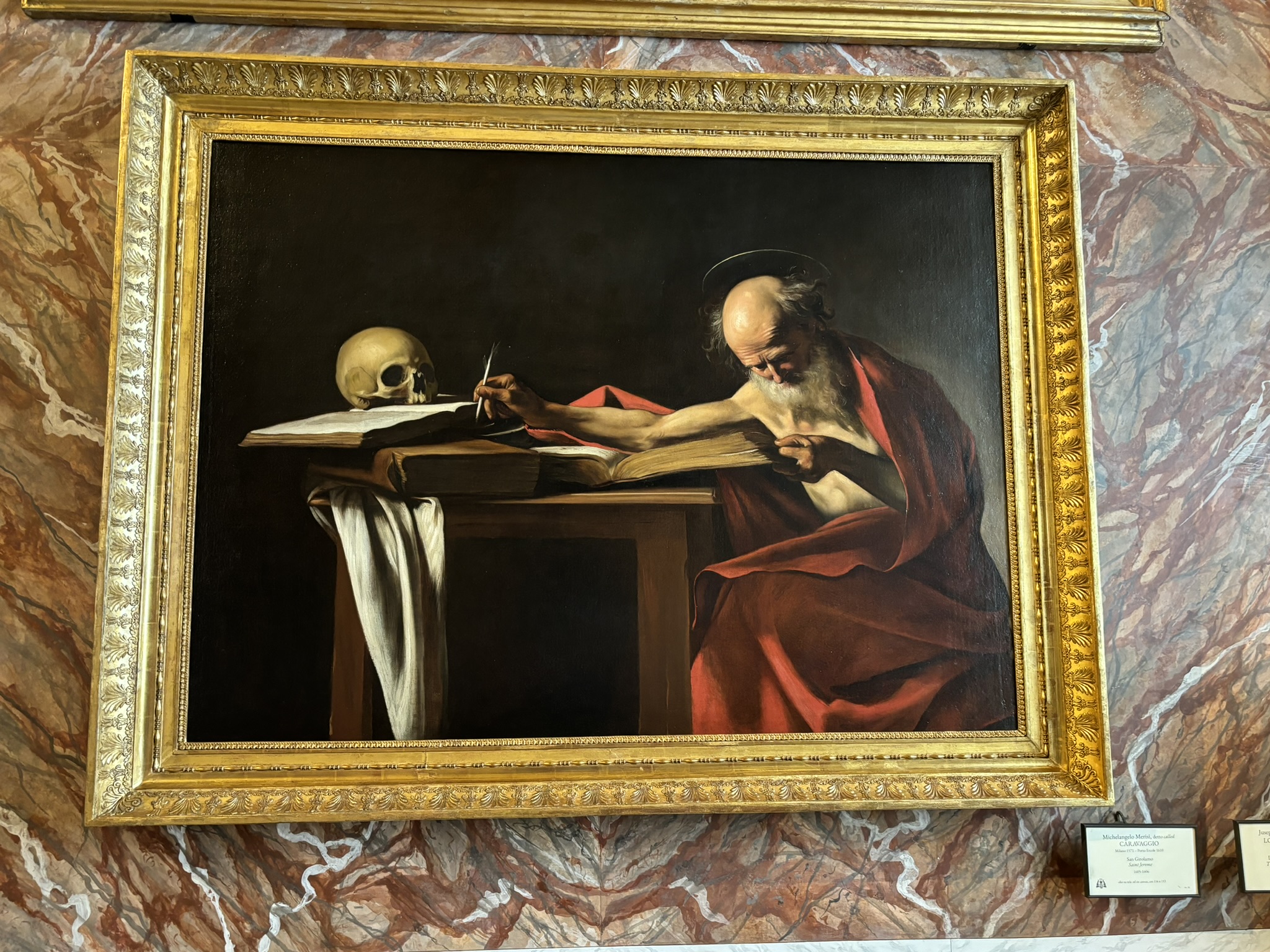
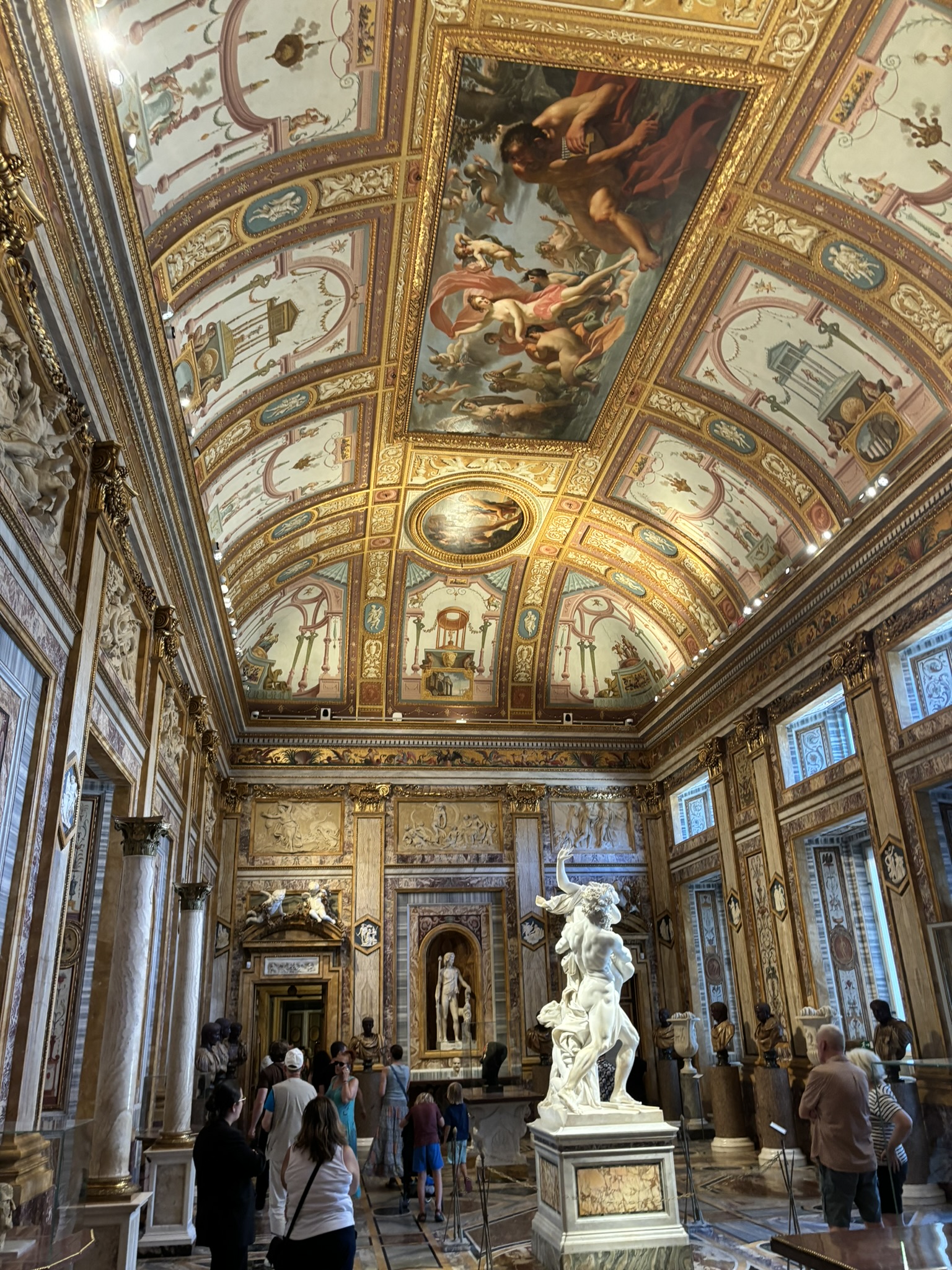
Day 3: The Spiritual Heart of Vatican City
Day three was all about Vatican City, the spiritual and cultural heart of the Catholic Church. I started at the Papal Basilica of Saint Peter, the largest church in the world. The sheer size and grandeur of the basilica left me in awe. Every corner is adorned with intricate details and stunning artwork.
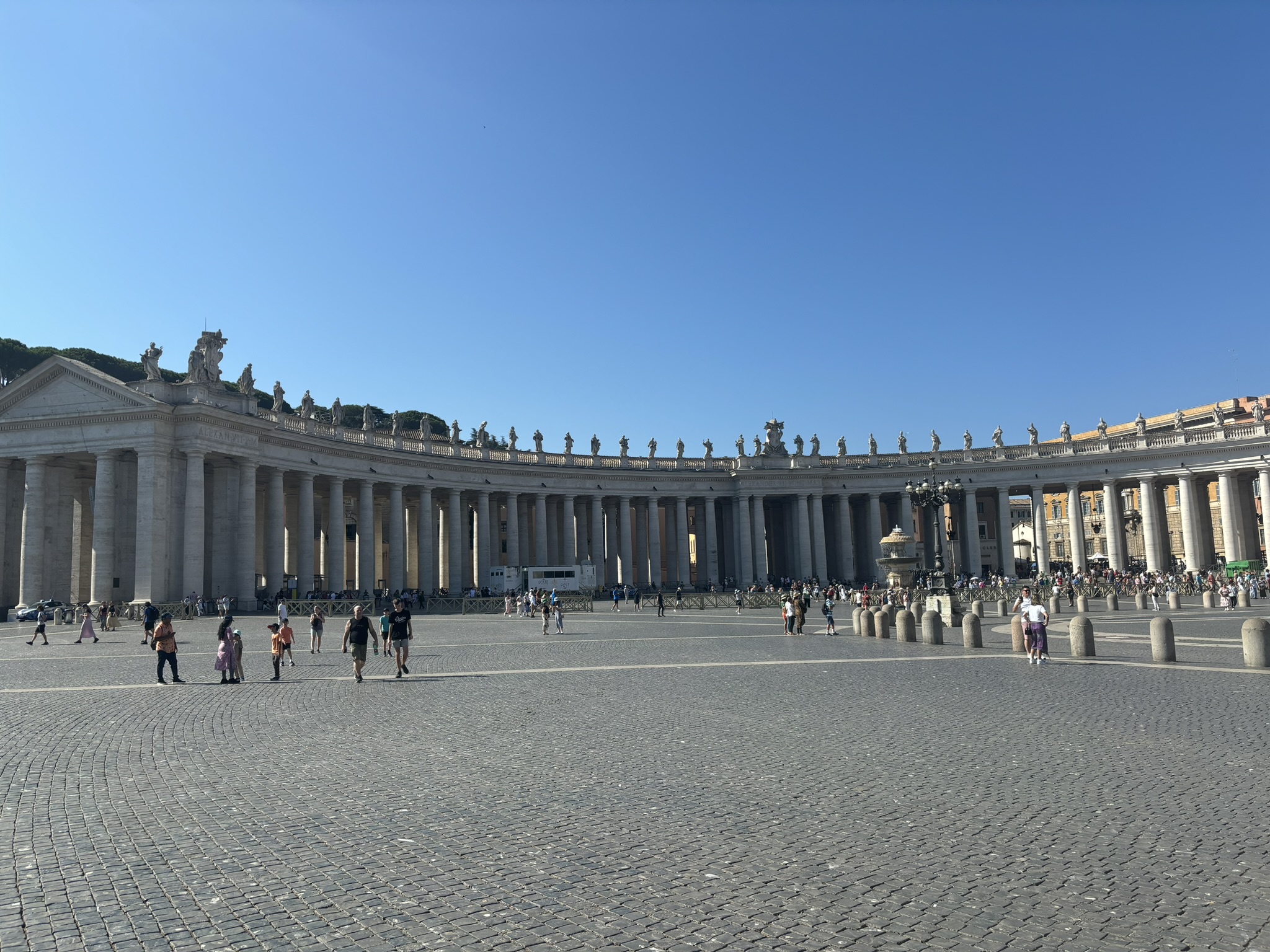
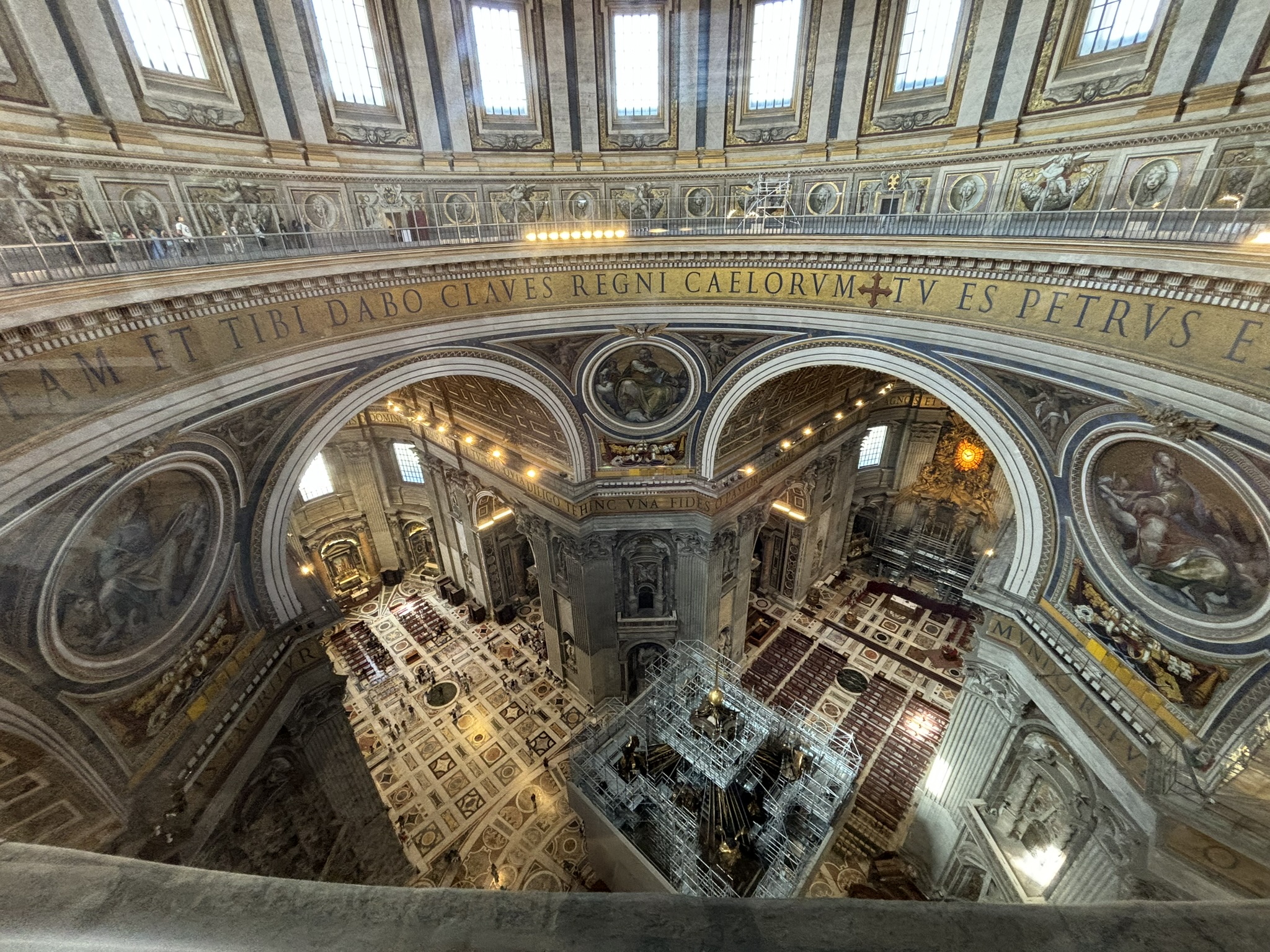
One of the highlights of my visit was climbing to the top of the basilica’s dome. It’s quite a trek – over 550 steps – but the view from the top is absolutely worth it. As I reached the summit, Rome spread out beneath me in all its glory. The sense of accomplishment after the climb, combined with the breathtaking view, made it a moment I’ll never forget.
Next, I explored the Vatican Museums. This place is massive, and every room seems to house another masterpiece. The sheer number of treasures – from ancient Egyptian artifacts to Renaissance paintings – is overwhelming. Among all the incredible works, I was particularly struck by a painting by Polish artist Jan Matejko, “Sobieski at the Gates of Vienna.” This dramatic and powerful piece from the 19th century depicts the heroic moment when King Jan III Sobieski of Poland led the charge against the Ottoman Empire. The intensity and detail in the painting were captivating and provided a striking contrast to the many Italian masterpieces around me.
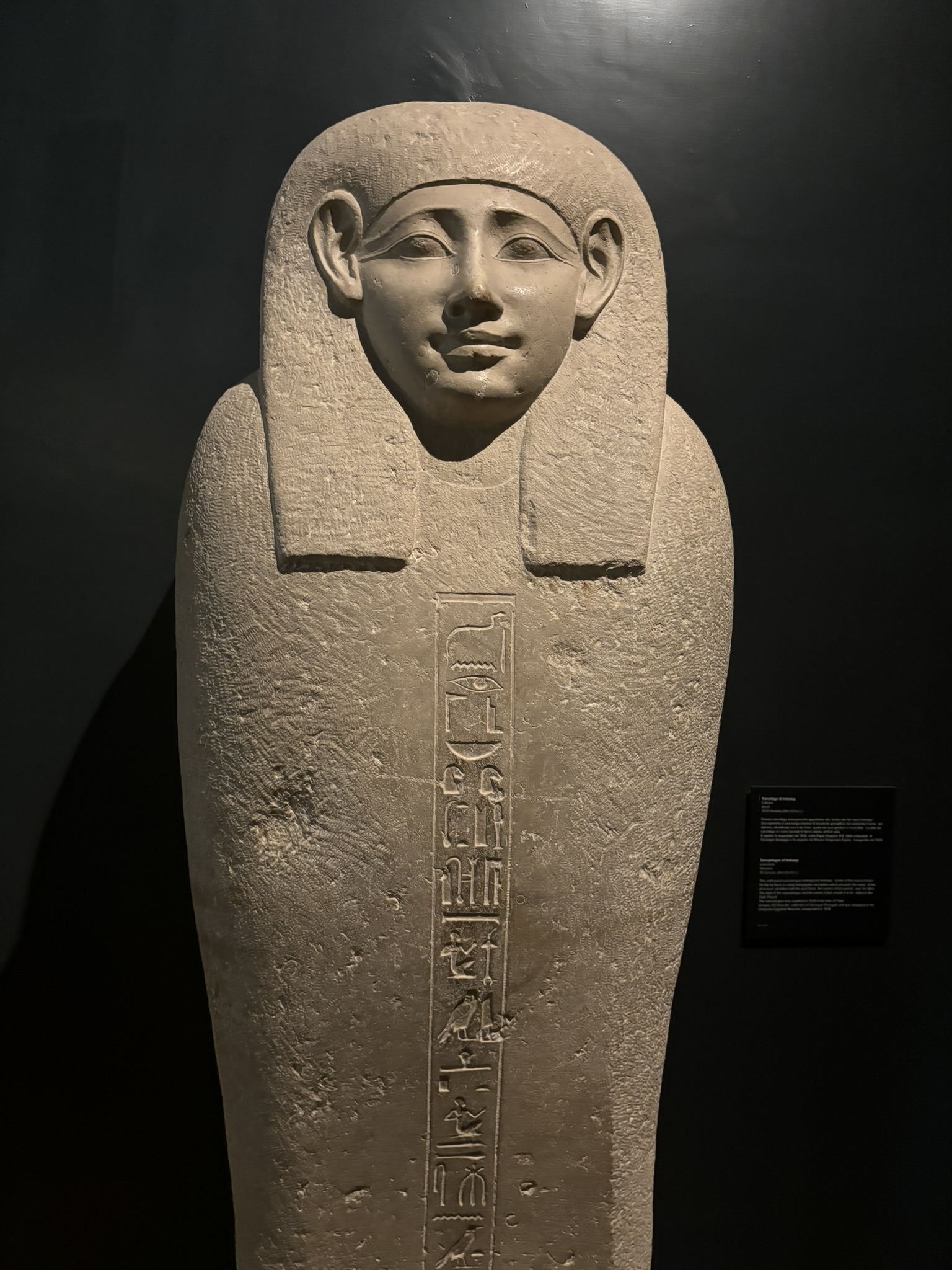
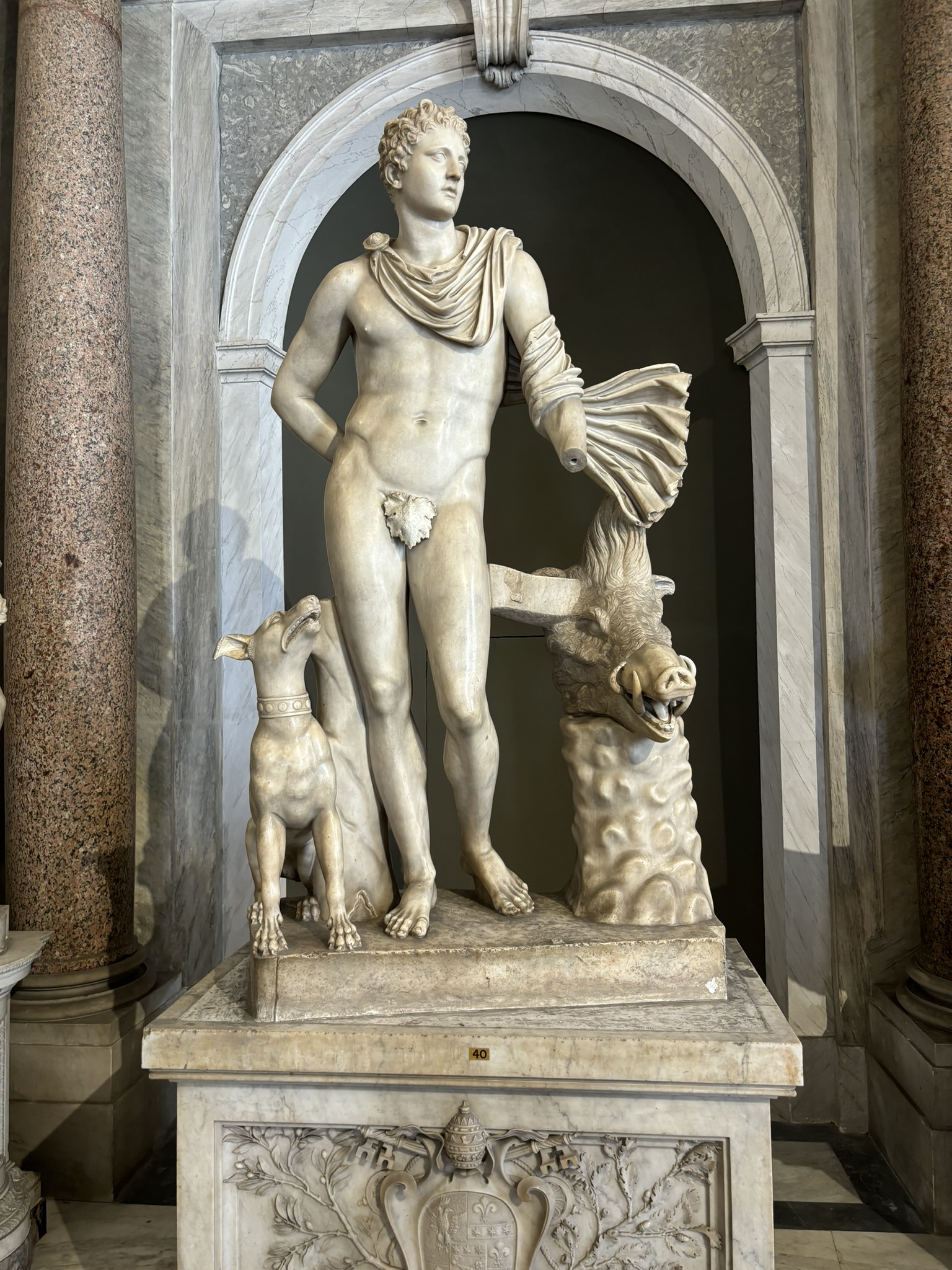
Of course, the Sistine Chapel was a major highlight. Seeing Michelangelo’s famous ceiling in person was surreal – it’s something you just have to experience to understand. The detail and the colors are simply breathtaking, and I found myself just standing there, craning my neck, trying to take it all in. Unfortunately, I don’t have any photos from the chapel because photography and recordings are strictly prohibited. But honestly, I’m glad I could just focus on the experience without the distraction of trying to capture it on camera. The memory of standing under that masterpiece will stay with me forever.
I finished off my Vatican visit with a quick trip to the Castel Sant’Angelo. Originally built as a mausoleum for Emperor Hadrian, it later became a fortress for the popes. The views from the top are spectacular, especially at sunset. The castle has this intriguing mix of ancient Roman, medieval, and Renaissance architecture, and exploring its winding corridors and rooms felt like stepping into a historical novel. Standing on the terrace and looking out over the Tiber River and the city of Rome was the perfect way to reflect on my day in the Vatican.
Day 4: Speeding to Naples
On day four, I hopped on the Frecciarossa, Italy’s high-speed train, and zoomed down to Naples at an exhilarating 300 km/h. It was my first time on a train that fast, and I was like a kid in a candy store! The ride was incredibly smooth, and before I knew it, I was in Naples, ready to explore a new city with its own unique charm.
Naples greeted me with its vibrant energy. My first stop was the Royal Palace, an opulent reminder of the city’s royal past. The lavish rooms and the grand architecture were impressive, offering a glimpse into the life of the Neapolitan royalty. The throne room, with its magnificent chandeliers and richly decorated walls, was particularly awe-inspiring. It’s easy to imagine kings and queens holding court in such a splendid setting. It was fascinating to learn that Napoleon lived here during his time as King of Naples. I even got to see his personal desk, a piece of history that added a personal touch to the grandeur of the palace
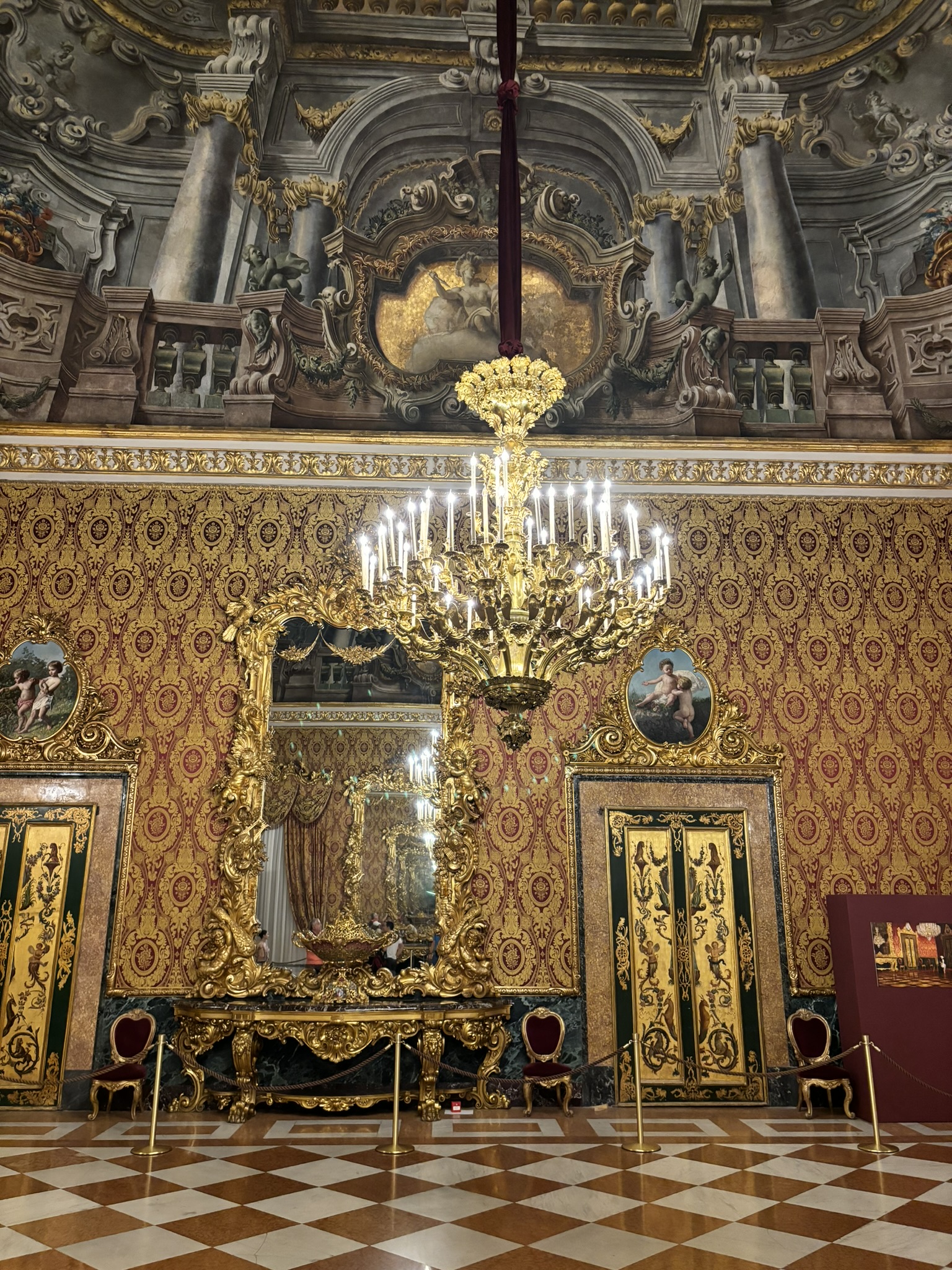
I was fascinated by a rotating table that allows you to read up to eight books at once! It’s a clever and elegant solution for researchers and book lovers. The rotating table was like something out of a steampunk novel, with its intricate design and functionality making it both practical and visually stunning.
I then wandered through the Spanish Quarter, a maze of narrow streets brimming with character. This area is not just lively and vibrant but also rich with local culture and history, especially its deep connection to football. The Spanish Quarter is packed with tributes to Diego Maradona, the legendary footballer who played for Napoli. Murals, posters, and even little shrines celebrate Maradona’s time with the team, reflecting the immense impact he had on the city. It was fascinating to see how the local culture has embraced this sports icon, and I loved how the streets buzzed with passionate discussions about football and Maradona’s incredible legacy.
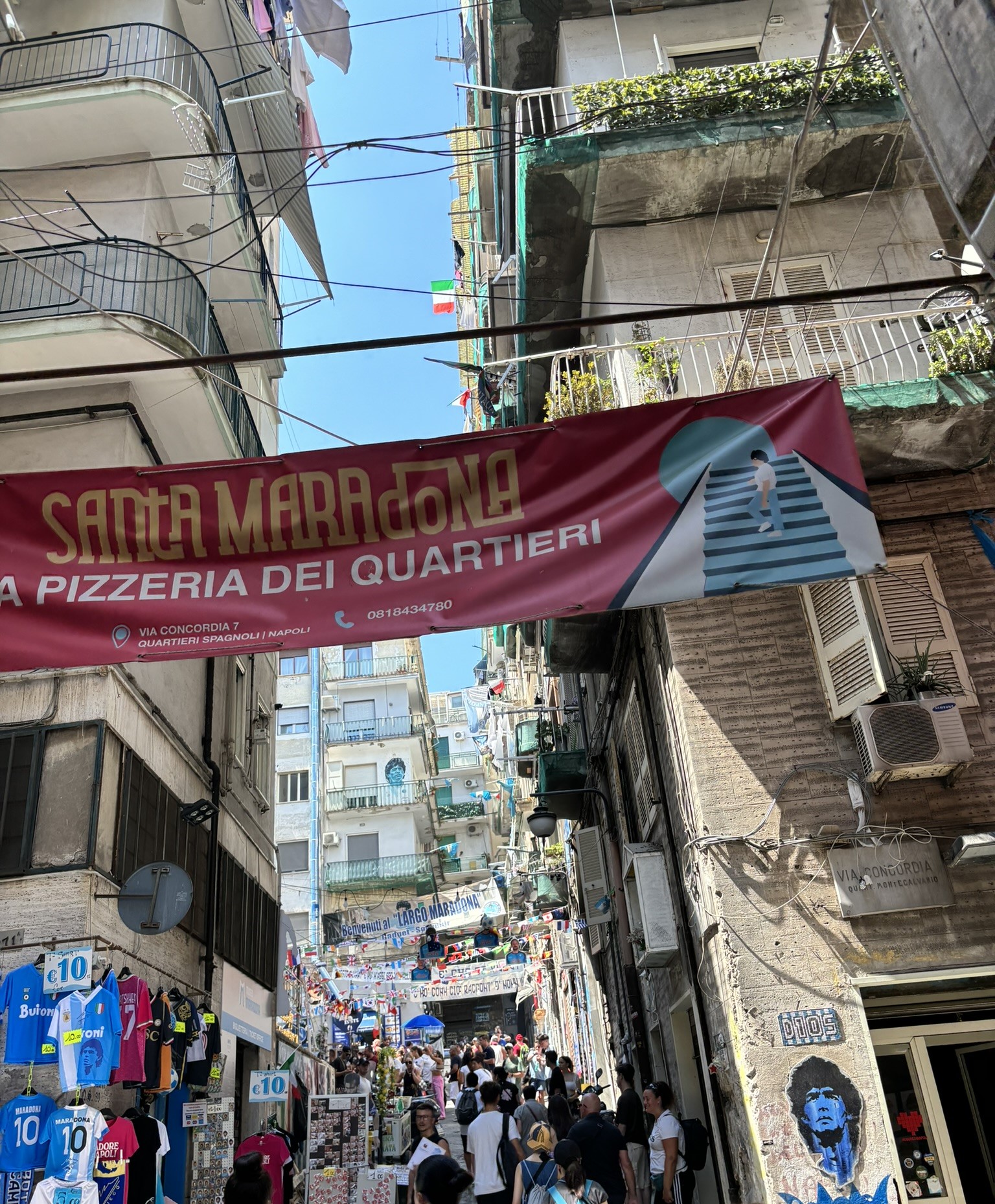
Later, I descended into Underground Naples, exploring the ancient tunnels and catacombs hidden beneath the city. It was a bit eerie but absolutely fascinating to see this hidden side of Naples. The tunnels, which date back to ancient Greek and Roman times, were used for everything from aqueducts to air raid shelters during World War II.
Day 5: Vesuvius and Pompeii
Day five was all about volcanoes and ancient ruins. I started with a hike up Mount Vesuvius, the infamous volcano that looms over Naples. The climb was a bit challenging, but the views from the top were worth every step. Looking down into the crater of an active volcano was both thrilling and humbling. The landscape around the volcano is rugged and almost otherworldly, with steam rising from the ground in places. Standing on the edge of the crater, I felt a mix of awe and respect for the power of nature.
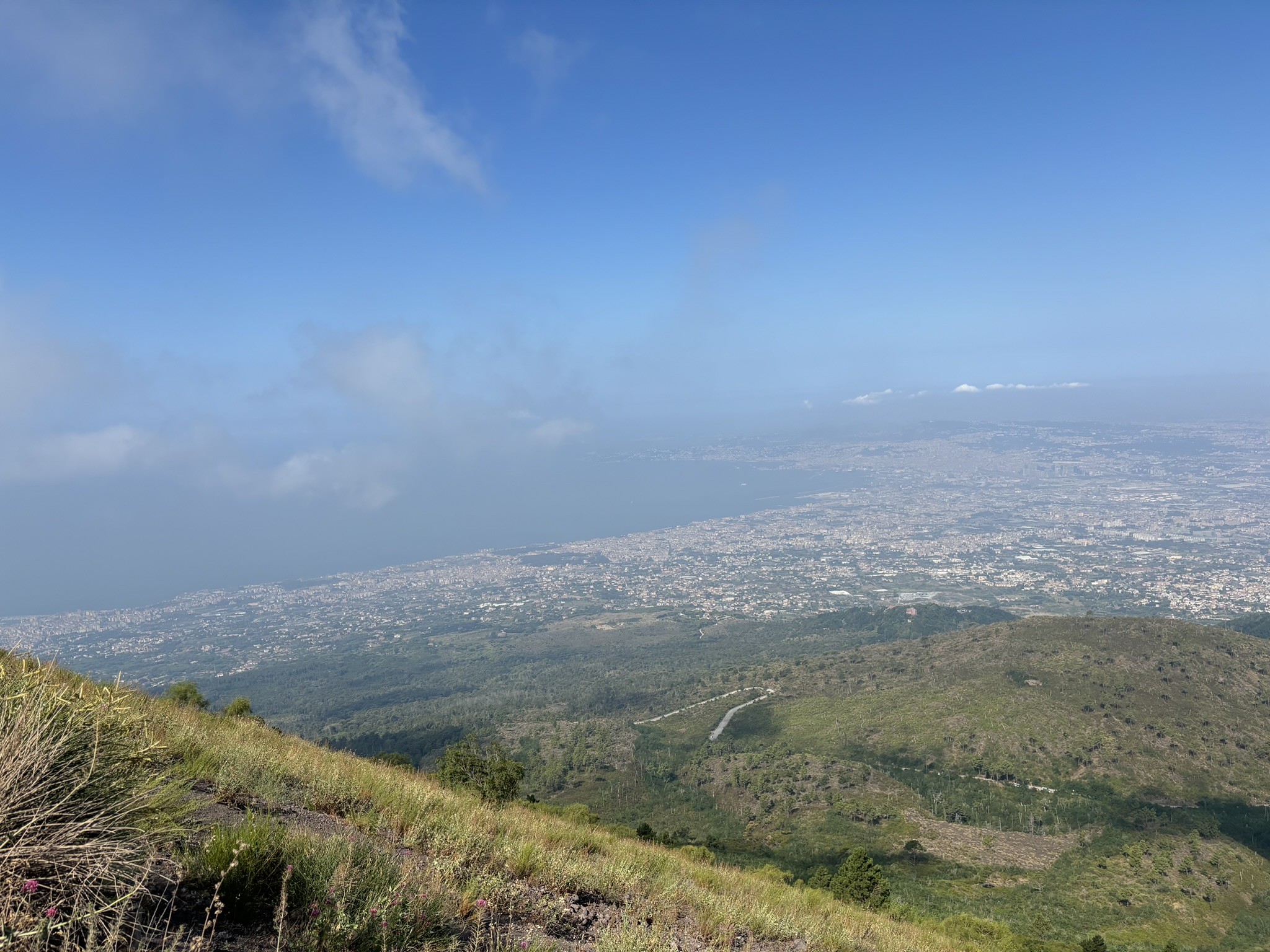
From Vesuvius, I headed to Pompeii, the ancient city frozen in time by the eruption of Vesuvius in 79 AD. Walking through the streets of Pompeii, seeing the preserved houses, and imagining what life was like before the eruption was an experience I’ll never forget. The level of preservation is astounding – you can still see the frescoes on the walls, the mosaics on the floors, and even the ruts in the streets from ancient chariots. The plaster casts of the victims of the eruption are haunting reminders of the tragedy that struck this vibrant city. Pompeii is like a snapshot of ancient Roman life, preserved for eternity.
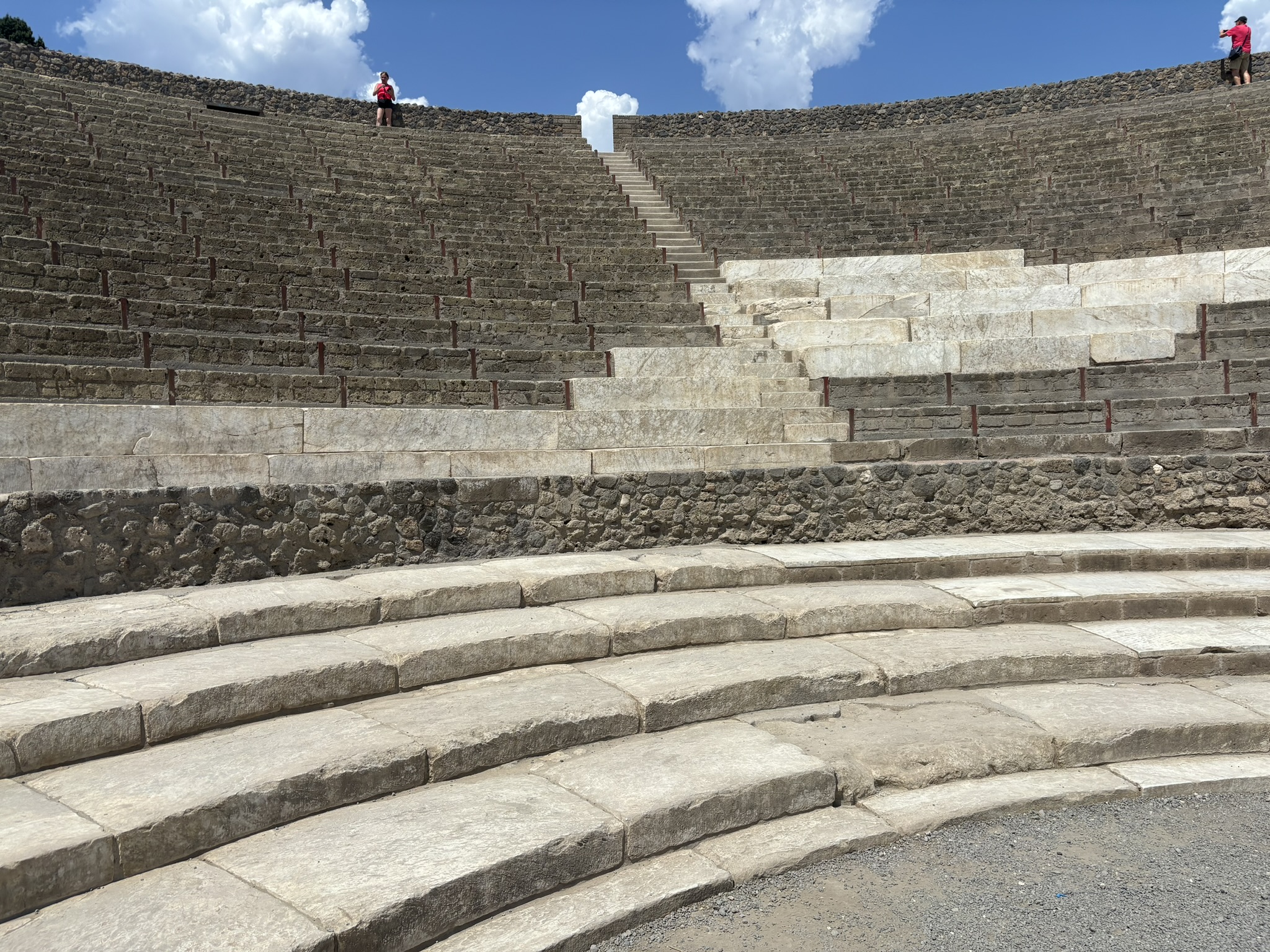
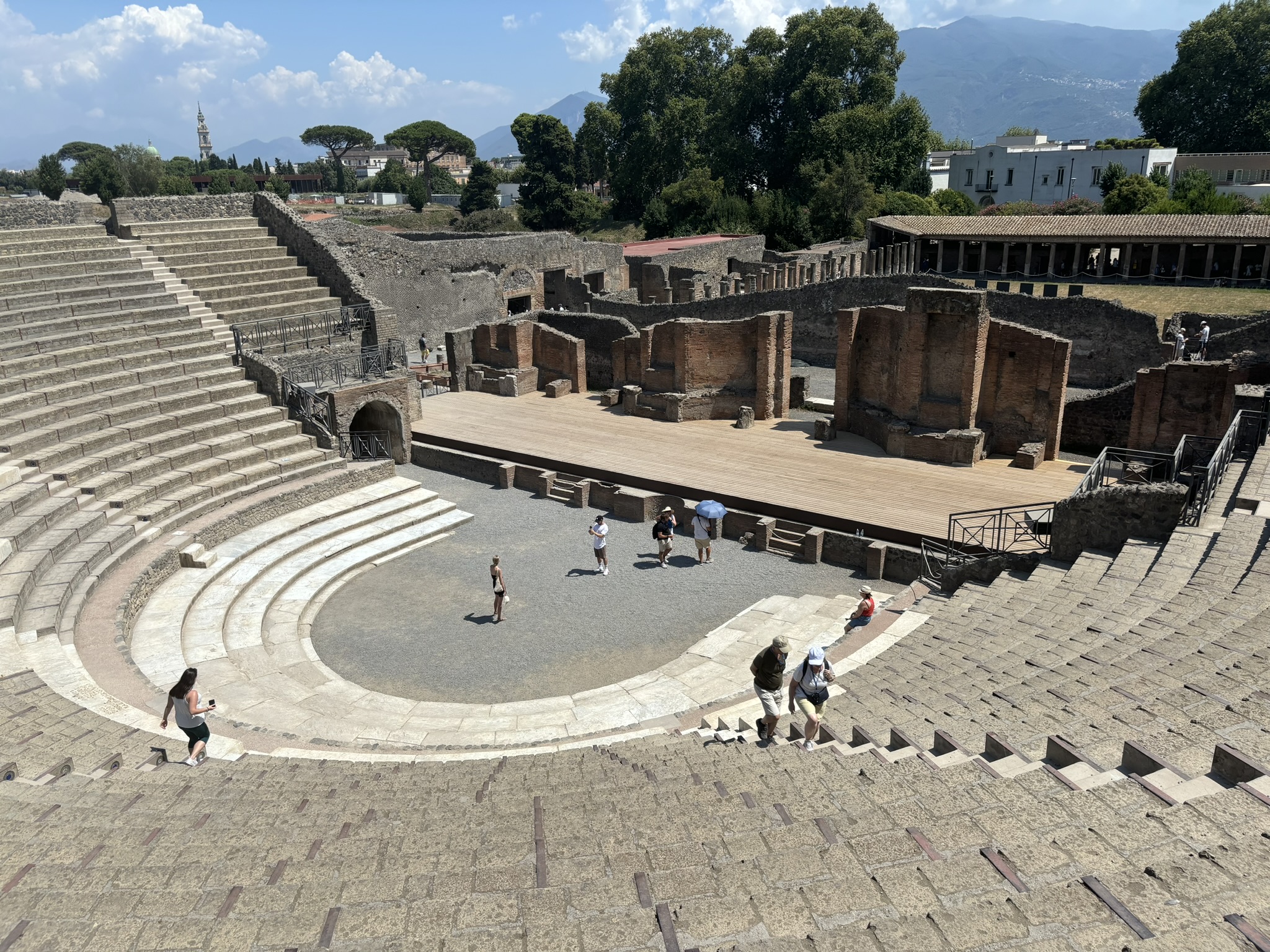
Day 6: Capri
For my final day, I took a ferry to the stunning island of Capri. The island is as beautiful as I imagined, with crystal-clear waters and breathtaking cliffs. The ferry ride over was an adventure in itself, with the sun shining on the water and the island slowly coming into view. Once on Capri, I decided to hike up Mount Solaro on foot, which was quite the workout but so rewarding. The views from the top were some of the best I’ve ever seen – you can see the entire island and the surrounding sea. The hike took me through lush landscapes. Reaching the summit, I felt like I was on top of the world, looking out over the endless blue of the Mediterranean.
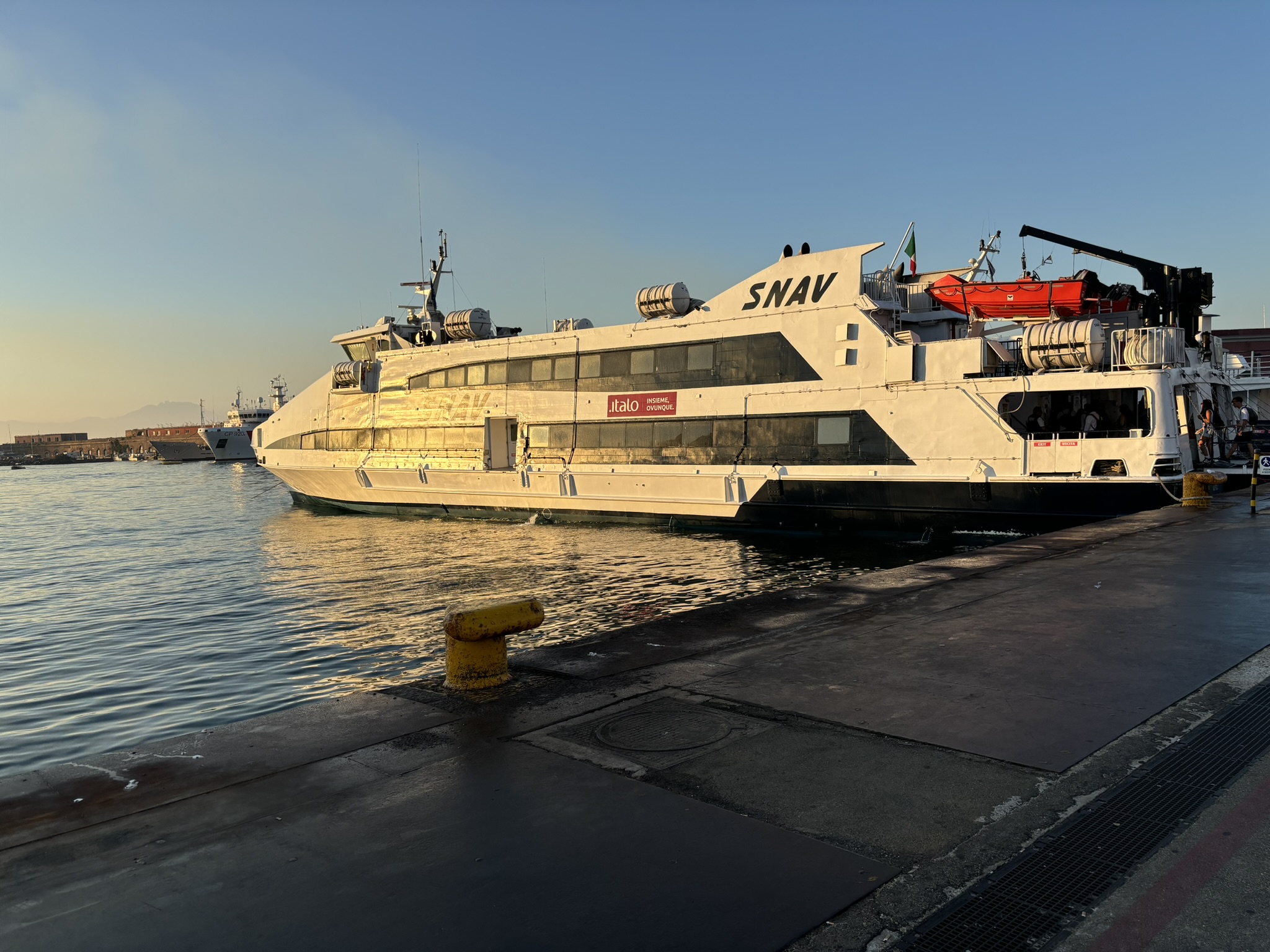
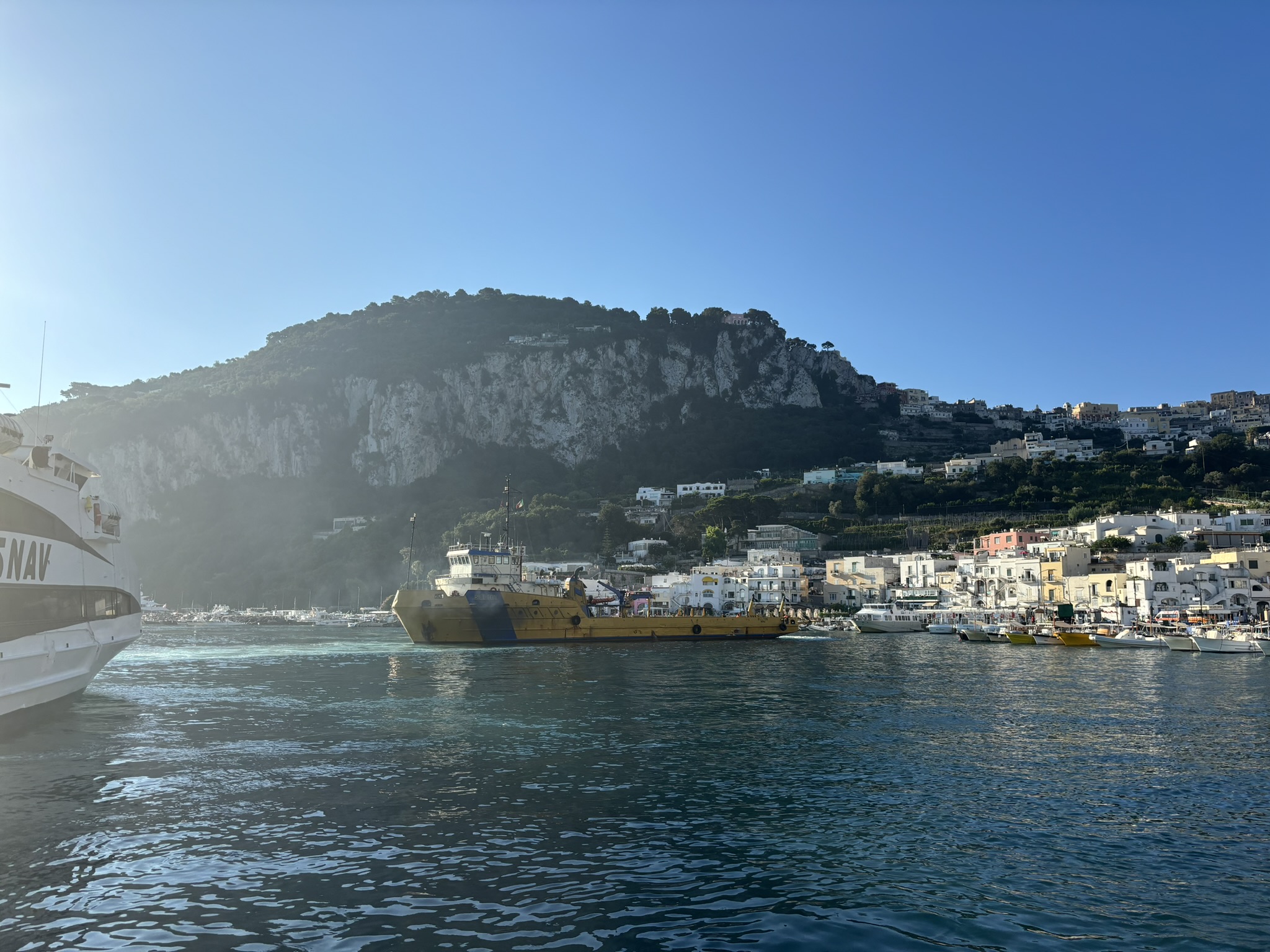
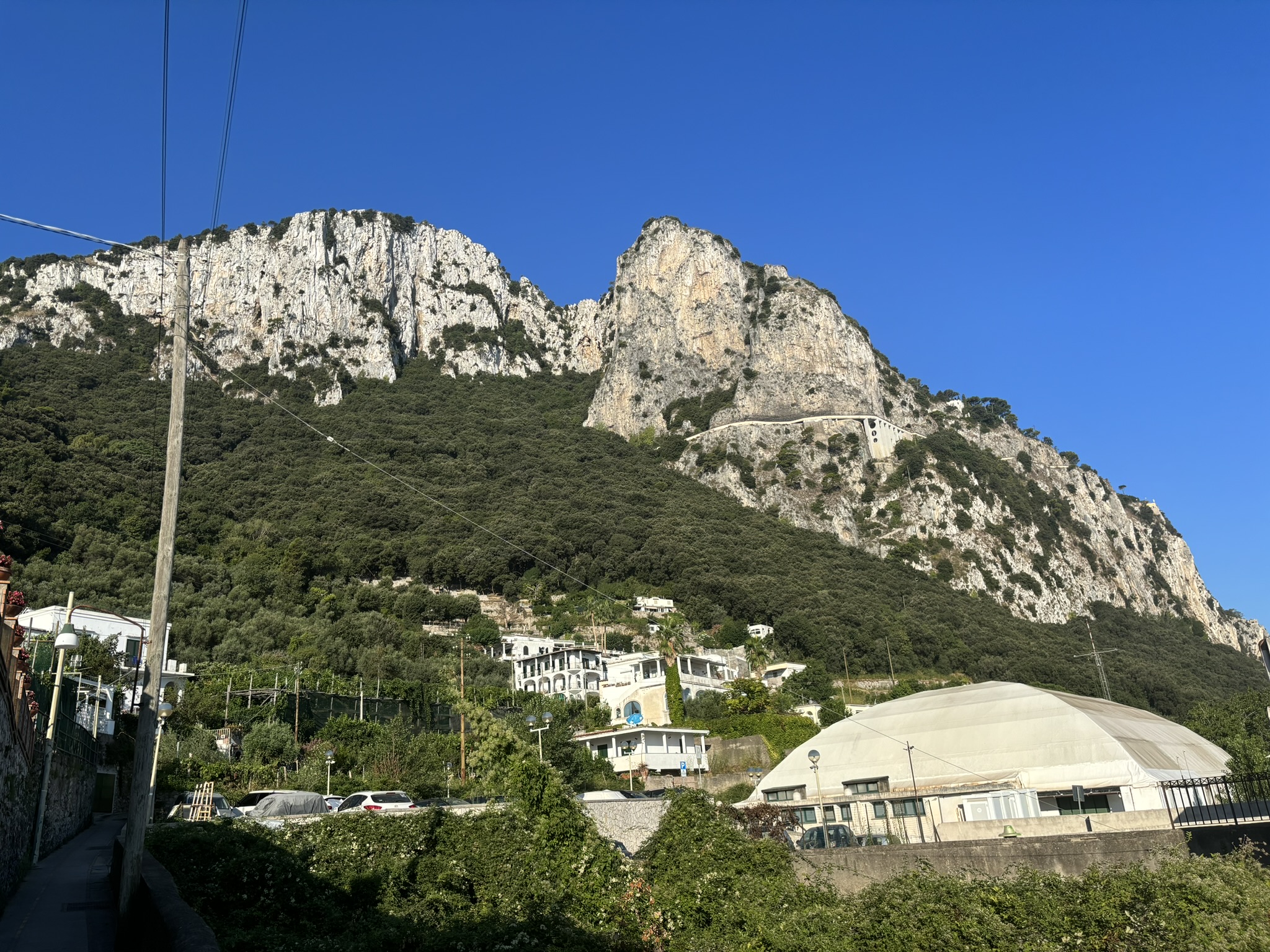
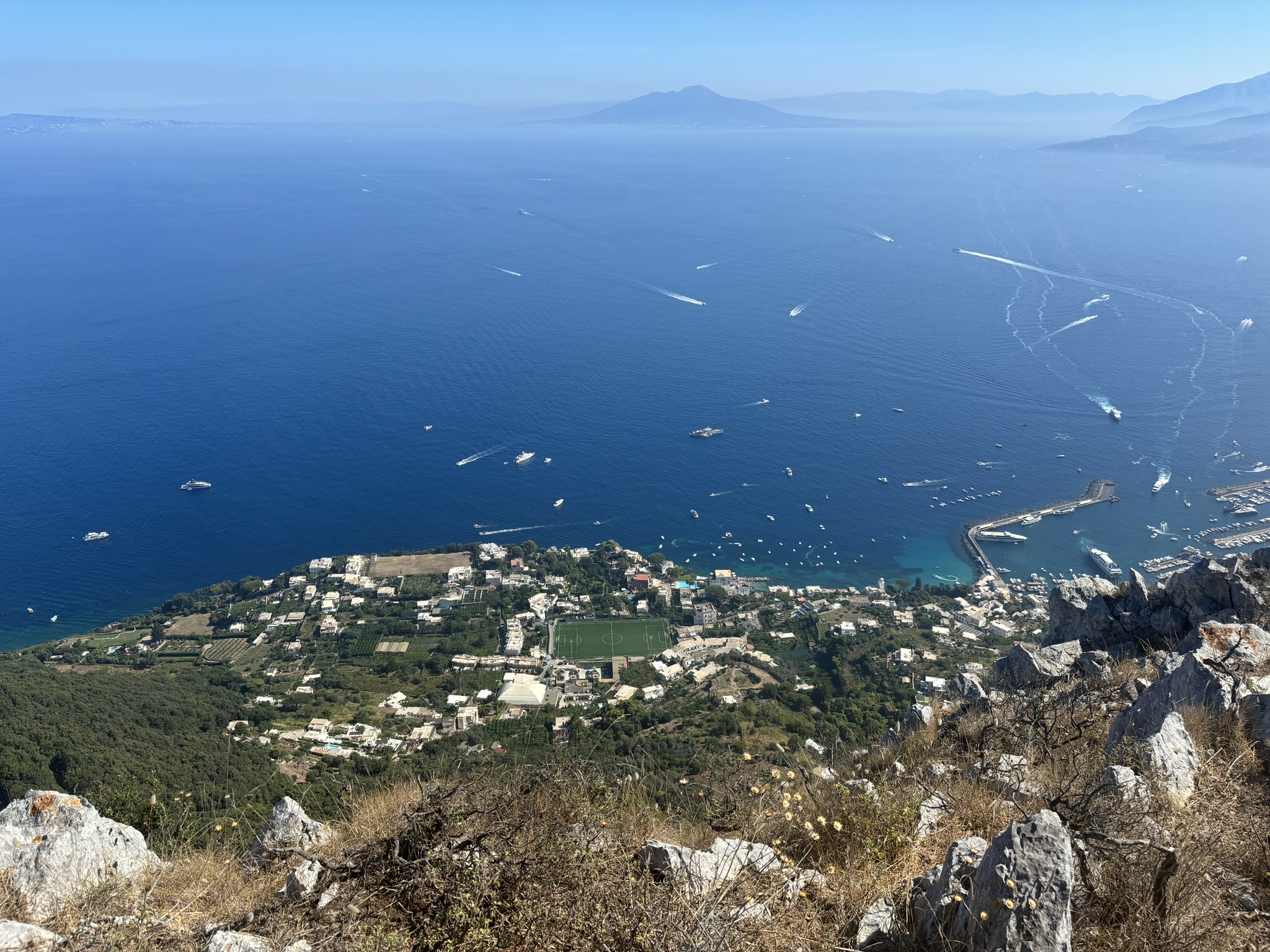
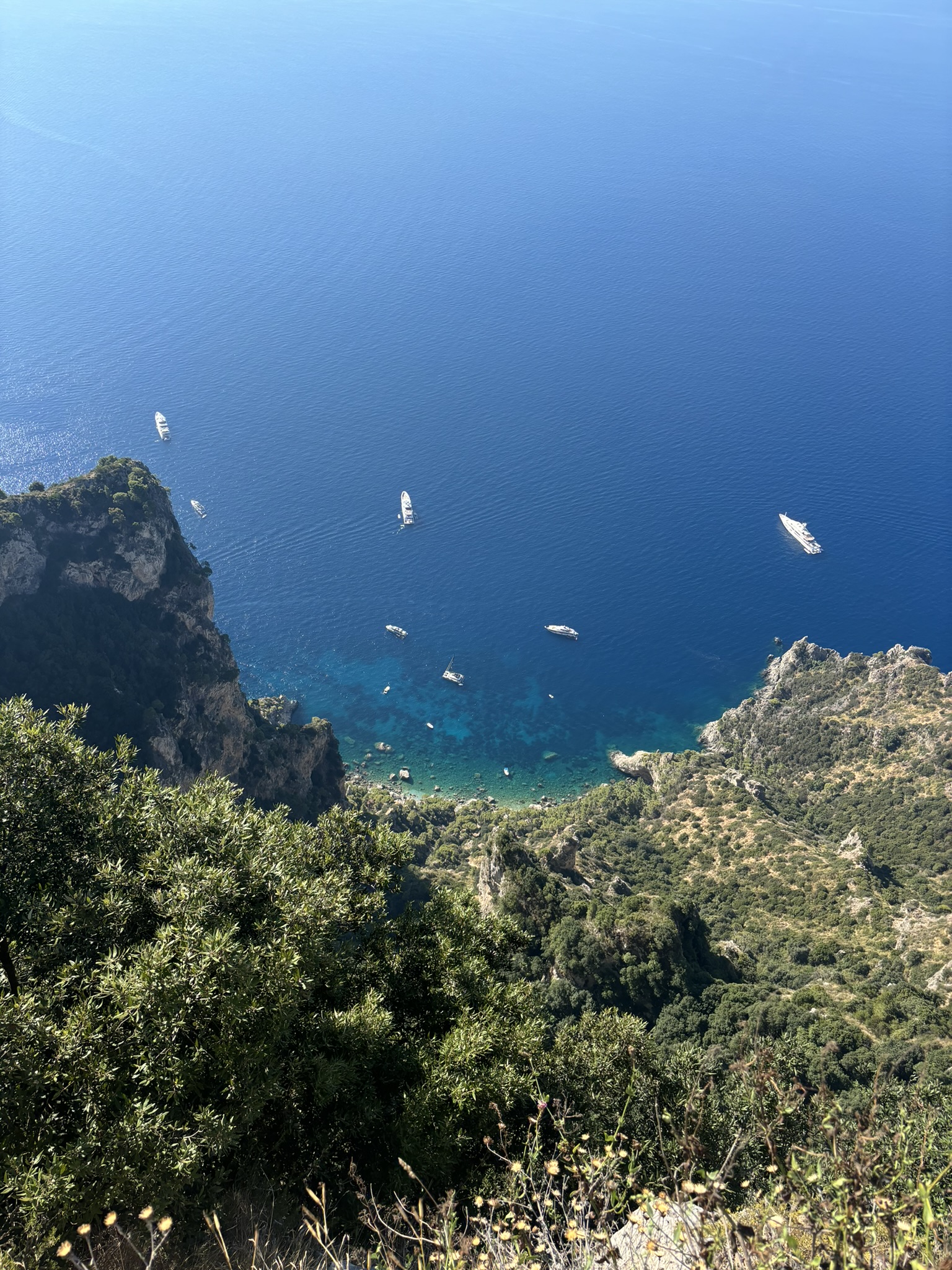
After the hike, I wandered through the charming streets of Capri town, indulging in some local treats and doing a bit of shopping. The town has a laid-back, luxurious vibe, with stylish boutiques, cafes, and stunning views at every turn. I ended my day with a relaxing dip in the sea, letting the cool water wash away the tiredness from my hike. Capri was the perfect way to end my trip, offering a peaceful contrast to the bustling cities I’d explored earlier in the week.
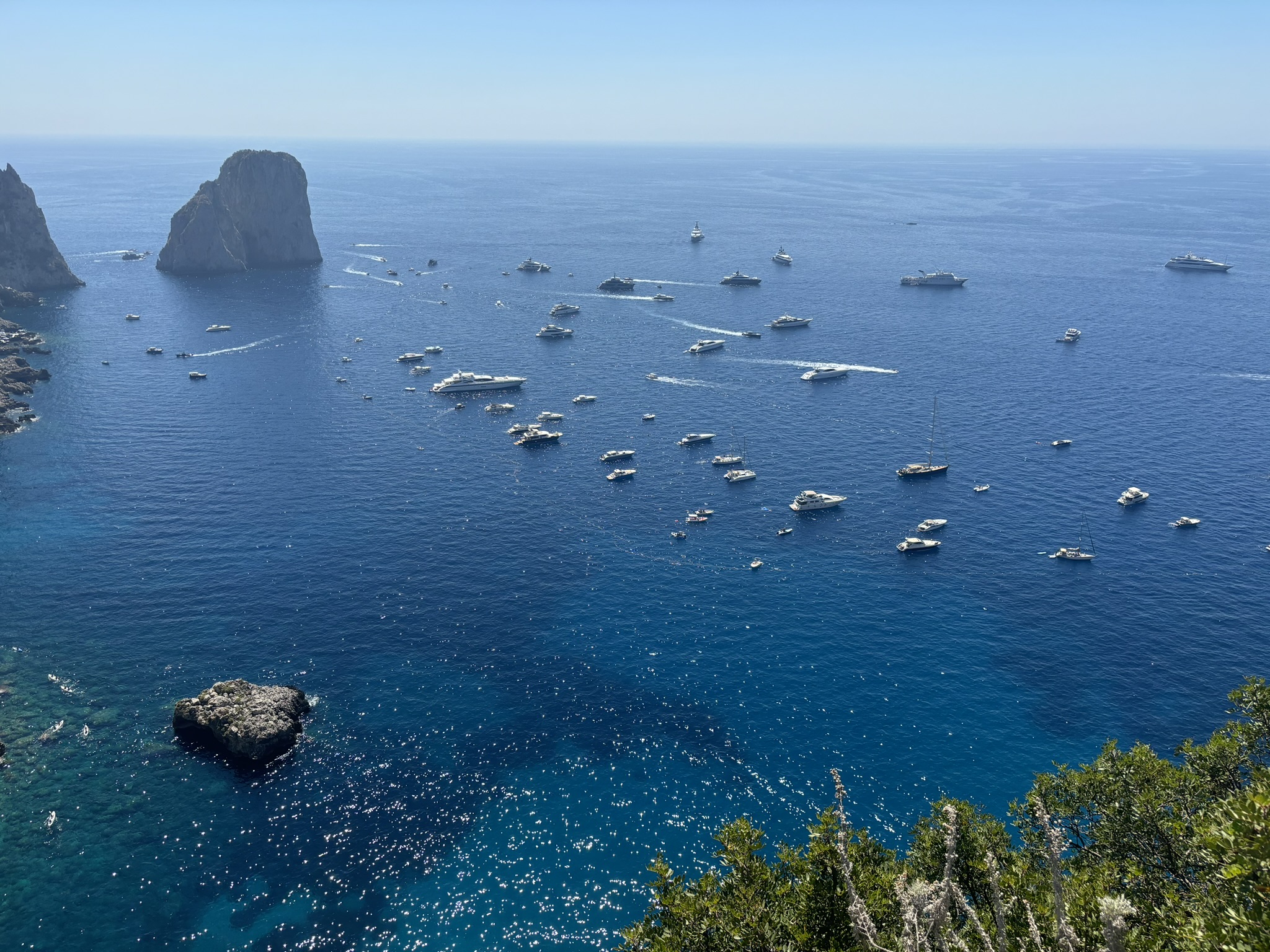
Italian Food
One of the highlights of traveling through Italy was, without a doubt, the food. Each city offered its own delicious specialties and unique dining experiences, making my culinary journey an unforgettable part of the trip.
Rome was where my food adventure began. I started almost every day with a strong espresso. There’s something about that perfect shot of coffee that just sets the tone for the day. I also made sure to enjoy gelato, Italy’s beloved ice cream. Each scoop was a creamy, flavorful delight that provided a refreshing break from sightseeing
Rome’s food scene is diverse and vibrant, with each meal offering a new delight. I found some standout spots that became my go-to places:
- Tonnarello Scala in Piazza della Scala was a fantastic choice. I ordered the Capricciosa pizza, and it was phenomenal – loaded with fresh ingredients and cooked to perfection. The atmosphere of the place was warm and welcoming, making it a great spot for a meal.
- Pinsere on Via Flavia was a revelation. Known for its delicious pinsa, a Roman-style pizza that’s lighter and airier than traditional pizza, it quickly became one of my favorites.
- Pinsallegra on Via Napoli offered a wonderful variety of pinse and was a great spot for a casual meal.
- Pastasciutta was another gem, serving up incredible pasta in a cozy, unpretentious setting. Their sauces were rich and flavorful, making each bite a pleasure.

And then there was the Maritozzo, a sweet Roman bun filled with whipped cream. This was, without a doubt, my favorite treat. I probably ate more of these than I care to admit, but they were just too good to resist!
When I moved on to Naples, the city’s food scene was just as impressive but with its own flair. Naples is the birthplace of pizza, and I made it my mission to try as many as possible. If you’re a pizza enthusiast, here are two must-visit spots:
- L’Antica Pizzeria da Michele: This legendary pizzeria is often hailed as the birthplace of the classic Neapolitan pizza. Expect long lines, but the wait is absolutely worth it for their simple, yet incredibly flavorful Margherita and Marinara pizzas.
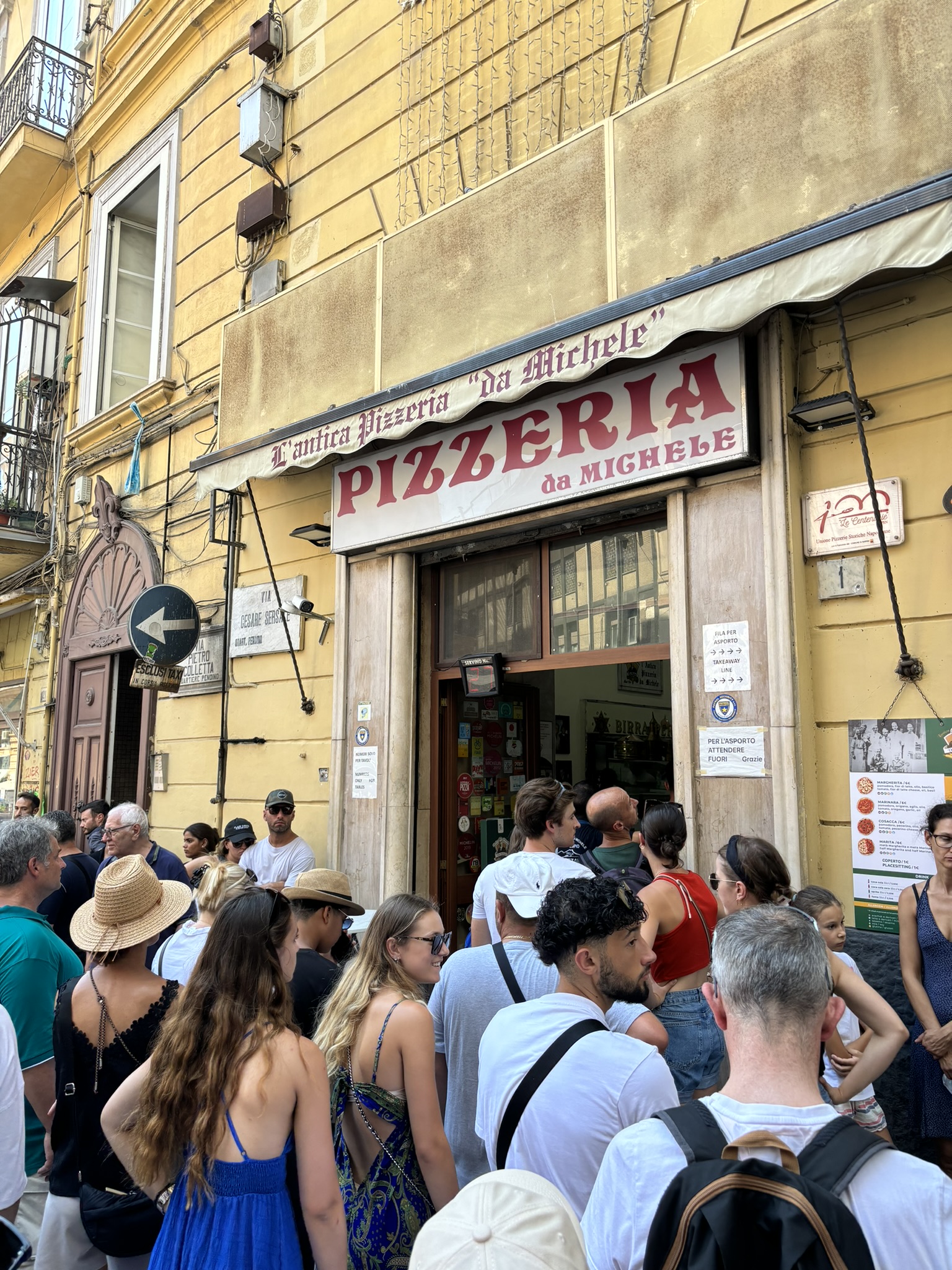
- Gino e Toto Sorbillo: Another iconic spot where the pizza is just out of this world. Be prepared for a bit of a wait, but once you get a table, you’ll be treated to some of the best pizza in Naples.
And while pizza is the star in Naples, don’t miss out on trying Sfogliatella. This delightful pastry, with its flaky layers and sweet ricotta filling, quickly became my favorite treat in Naples. Each bite was a delicious explosion of flavors and textures that perfectly encapsulated the city’s love for its pastries.
The culinary difference between Rome and Naples is striking but equally delightful. Rome offers a rich variety of traditional Italian dishes with a focus on pastas and elegant trattorias, while Naples proudly celebrates its pizza heritage and a more vibrant, street-food-driven scene. Each city has its own flavor and charm, making Italy a dream destination for food lovers.
Walking Everywhere
In Italy, I made it a point to walk almost everywhere. With a few exceptions like traveling to the airport or taking the train between Rome and Naples. I relied on my feet to get me from one destination to the next. And let me tell you, it was an awesome strategy! Walking gave me the chance to truly immerse myself in the cities and discover hidden gems along the way. Over the course of six days, I walked a total of 138.87 kilometers that’s 187,676 steps, averaging about 23 kilometers and 31,000 steps per day. Those numbers might sound a bit daunting, but it was absolutely worth it.
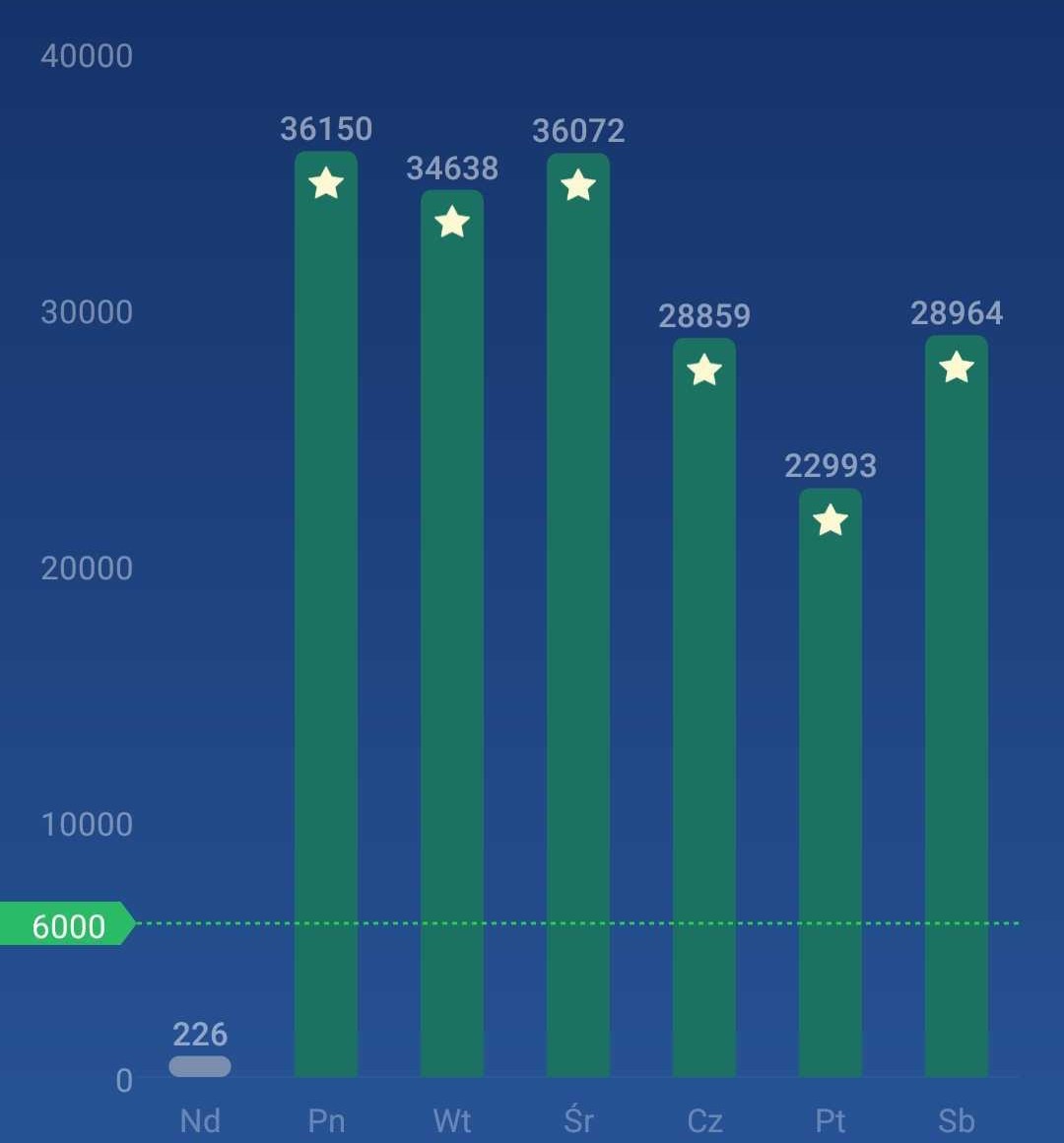
When you’re on foot, every journey becomes an opportunity to explore. On my way to famous landmarks, I stumbled upon charming side streets, local shops, and cozy cafes that I might have missed otherwise. The slower pace allowed me to take in the architecture, the atmosphere, and the everyday life unfolding around me. It was like the cities themselves were guiding me to see more than just the tourist spots.
Another tip from my experience: I left my headphones in my bag during my walks. By doing this, I was able to fully engage with my surroundings. I could hear the lively chatter of people, the hum of traffic, the music drifting from open windows, and the occasional street performer adding a soundtrack to my journey. This decision helped me feel more connected to the cities and truly soak in their unique vibes.
People I Met Along the Way
One of the most memorable aspects of my Italian adventure was the incredible people I met along the way. Staying in hostels allowed me to connect with travelers from all over the world, each bringing their own unique stories and perspectives.
I want to extend a huge thank you to everyone I met during my travels. Your company, shared experiences, and the fun times we had together truly made my Italian adventure special. It’s amazing how a shared passion for travel and discovery can bring people together, and I’m grateful for the memories made along the way.
